











Students Backpacking up Cadair Idris, Wales [Sydney Schultz]
The Aleph: a journal of global perspectives Volume XVI, 2023
Thomas D’Agostino, Editor
Hannah Mathews, Assistant Editor
Julyssa Winters, Artistic Director
Bridget Van Brocklin, Layout and Design
ISSN 1937-0474
Stories in The Aleph are set in Gentium, designed by Victor Gaultney and adopted by SIL International, an organization working to document thousands of dying ethnic languages, many of which are written in modified Latin scripts. Most digital fonts do not include these extended alphabets and therefore millions of people are shut out of the publishing community. Gentium is an attempt to meet this challenge. The name is Latin for belonging to the nations.
© 2023 Hobart and William Smith Colleges and Union College Partnership for Global Education
Thomas D’Agostino, Executive Director
Trinity Hall, 3rd Floor
Hobart and William Smith Colleges Geneva, New York 14456 (315) 781-3307
Cover Photo Credits:
Front Cover: Sidi Bou Saïd, Tunisia [Johanna Golden], Sunday Market, Aix-en-Provence, France [Julia Stockwin]
Inside Front Cover: Canal and Gondola, Venice, Italy [Zhengrui Wei]
Inside Back Cover: Tsitsikamma National Park, South Africa [Fatou Diokhane]
Back Cover: A Ray of Sunshine, Trastevere, Rome, Italy [Zhengrui Wei]
The first edition of The Aleph: a journal of global perspectives was published in 2002 as part of the Partnership for Global Education initiative between Hobart and William Smith Colleges and Union College. Since its inception, the journal has served to reflect the wealth of international experience among students at our respective institutions, and we are pleased to have extended this opportunity to students across the New York Six Liberal Arts Consortium.
The journal takes its name from the 1945 short story “The Aleph” by Argentine writer Jorge Luis Borges. In the story, the narrator (a writer) comes upon “a small iridescent sphere of almost unbearable brilliance” in which “without admixture or confusion, all the places of the world, seen from every angle, coexist.” Through this encounter with the mystical Aleph, he is able to see all things from all perspectives – yet he despairs of the daunting task of trying to convey the enormity of this experience to his readers.
Our students face much the same challenge when they return from abroad: after crossing borders and cultures, navigating societies different from their own in which they are exposed to new values and perspectives, how can they make sense of it all? How can they adequately convey the significance of the experience to those who did not share it?
The Aleph: a journal of global perspectives was created to address this dilemma. It provides a space for reflection, analysis, and dialogue that benefits contributors and readers alike. The pieces, both written and visual, offer insight into what captivates, challenges, and inspires our students – and through these words and images we learn about the people and places they encounter, we see how they change along the way, and we are exposed to “all the places of the world, seen from every angle.”
6)
I. Entering Tunisian Culture Through Dance (Johanna Golden) II. From Jazz Clubs to Carnival: The Effect of Globalization on Musical Traditions in Europe (Haley Sax) III. Discovering a New Culture Through Food (Madison Kaenzig de Denus) IV. A Night at the Ballet (Nicole Miller)
24)
I. My Week in Nyeri (Mary Baillos) II. A Piece of Home 4,000 Miles Away (Caroline Mittleman) III. A New Home (Alex Davidson)
34)
I. Language as a Means of Reciprocal Exchange (Julia Stockwin) II. California Girl in France: A Crisis of Fashion Identity (Alexandra Hill) III. The Adjustment Process (Needhi Bajaj)
LESSONS (p. 46)
I. Pace of Life in Freiburg (Sam Sobel) II. Dentalzentrum in Berlin: Unexpected Experiences That Improved My German (Kathryn Arendt) III. Profitez-bien! (Julia Stockwin)
REFLECTIONS (p. 54)
I. My Rose, Bud, and Thorn of Studying Abroad in Seville (Sydney Schultz) II. Stolpersteine: Connecting Freiburg to Life at Home (Sarah Palmisciano) III. A Careful Testament to History: The Altes Museum (Madeleine Mood) IV. Reflecting on Germany, Friendship, and Thinking About the Future (Sarah Palmisciano)
VERSE & VISION (p. 84)
I. Market O Minty (Paris Isle) II. Nature, Community, and Faith (Fatou Diokhane) III. Pages from My Journal, September 2022 (Claire Kapitan)
MOMENTS (p. 92)
I. Wishing for Magic (Clare Burke) II. Two Moves Ahead (Timur Martinez Smirnov) III. Unexpected Memories (Karina Connolly)
SURROUNDINGS (p. 110)
I. Suhl Searching (Ian Albreski) II. Navigating Through the City (Hannah Taylor) III. The Utopian Garden City (Maeve Reilly) IV. Tempelhof Community Garden (Hannah Taylor) V. The Mangroves of Watamu, Kenya: A Local Ocean Conservation Intern’s Perspective (Hope Olson)

n. 1. an agreed arrangement to go somewhere or do something at a specific time
2. the act of being involved in an activity
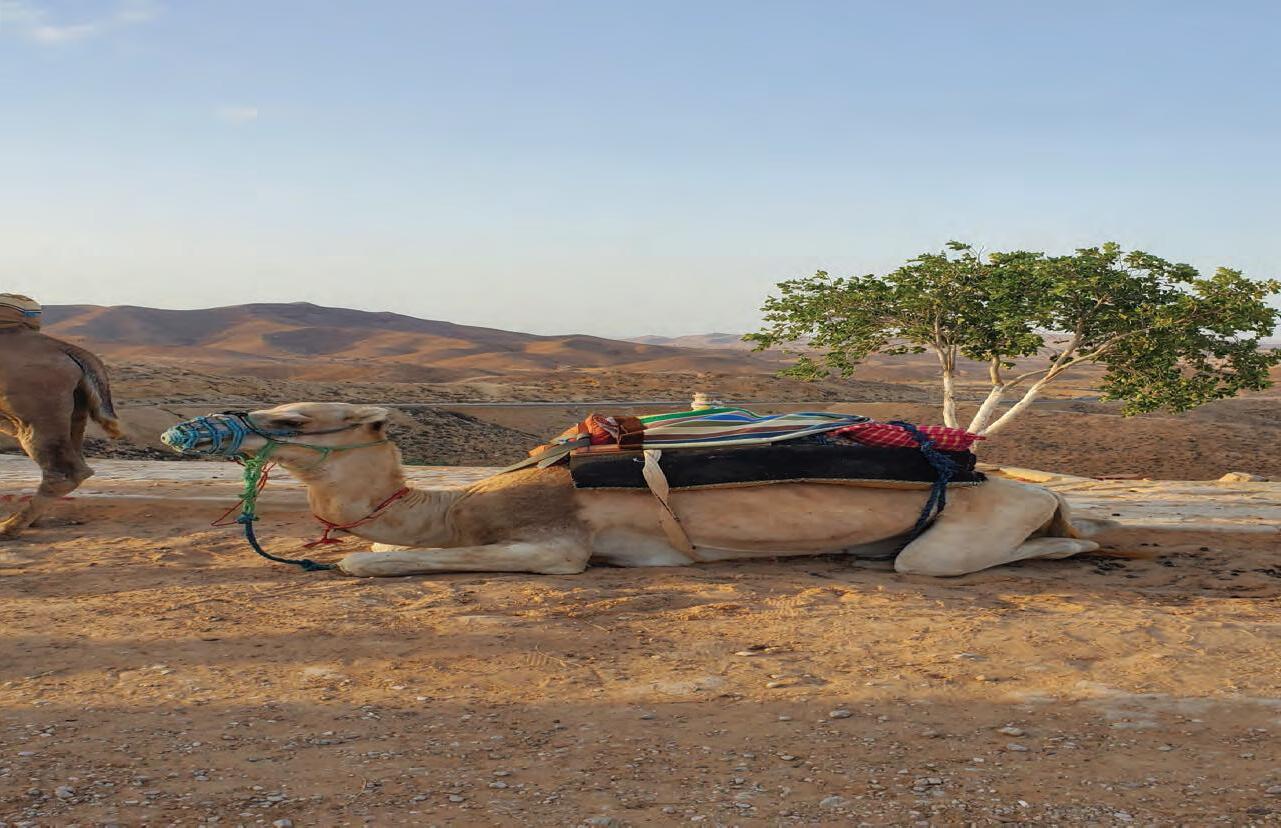
A Camel in Matmata, Tunisia [Johanna Golden]
There are many moments and memories that flash through my head when I play back the story of my semester abroad in Tunisia, North Africa. Part of me still does not believe it was real and that I did actually get to go after waiting two years from application to arrival. Those four months almost have an out-of-body feeling. Whiffs of my jasmine perfume place me back in my homestay and remind me of walks along the flower-lined streets. Spoonfuls of lablabi mixed with harrisa bring me to restaurants where I tried to sprinkle as much Tunisian Arabic into my French as I could. The feeling of a thin scarf around my hips transforms my movement to what I learned in my danse orientale classes. Dancing abroad was one of the greatest decisions I made. Moving intentionally always grounds me in my body and, as a lifelong dancer, I knew it would be incredibly difficult for me to go four months without any opportunities to dance. Being in North Africa came with the chance to learn Middle Eastern and Tunisian styles of dance, something I do not have access to back home.
Eager to try something new, I enrolled in danse orientale classes with the help of a grant from the Student International Initiatives Fund (SIIF). These classes, as fun as they were for me, did not come without their challenges. This style of dance requires movement and usage of muscles I do not normally train as a ballet and modern dancer. The vocabulary of the steps centered around the movement of
the hips, something you never move in ballet. One night, my teacher, Mado, had me lift my hip so high I thought I was going to fall over; the sides of my thighs had never been so sore.
Danse orientale, despite its obvious differences, also had a lot in common with the other forms of dance I have studied. The arm placement and movements were inspired by the port de bras in ballet, of which I had years of practice. Many dance styles, no matter where in the world they come from, share a basic ethos. Mado reminded me that dance does not stop between steps and that it uses the entire body. As I tried to get the hang of each new step, I would fail to transition between each movement, and I would lose the je ne sais quoi quality of the dance. I would forget to breathe and smile the harder I concentrated - both problems I constantly faced dancing at home. At its core, danse orientale is a light, happy, and presentational style of dance, much like ballet. As I became more familiar with the style of dance, I was able to focus on these similarities and dancing became easier.
The environment of the studio made it easy for me to remain light and happy; my teacher was excited to teach me, and the other adult women in the class were always very kind and welcoming toward me. I had fun messing up and forgetting the combination with the others. Most of them were the same from week-to-week, and they quickly remembered my name and would wish me good night. One mother-daughter duo began driving me to and from class and even presented me with a gift on my birthday. I would not have met these amazing women if I did not take this class. My experience in Tunisia was made far more culturally, academically, and interpersonally rich through danse orientale classes.
Dance class is a microcosm of societies. It enlists specific etiquettes and languages that mix to create its own culture.
Being able to acclimate to a different type of dance class is analogous to settling into a new community abroad. I used the same problem-solving tools to navigate the studio as I did in cafés or on the TGM train. I had to learn new terms in both French and Arabic to satisfy the need for a specific vocabulary. Having these tools allowed me to utilize everything I learned in my daily life abroad and apply the lessons intensively in a one-hour class. Dance allowed me to go deeper into Tunisian culture and was the apex of my immersion. As I continue making my way across the globe, I hope to witness and learn the dances of different peoples everywhere as a way to better understand the world.
-Johanna Golden
des Délices, Sidi Bou Saïd, Tunisia [Johanna Golden]

Late on a Sunday night in April, I descended the carved stone steps into the dark depths of a cave bar in the heart of Paris. As I rounded the final corner, I saw a room filled with people captivated by brilliant improvisational jazz musicians and talented couples swing dancing. The music and energy of the people filled the cave. We were gathered in Caveau de la Huchette, noted most recently for its appearance in the movie La La Land. Locals and tourists alike sat together to enjoy the spectacle and experience a part of the acclaimed Paris music scene.
Humans have always used music to connect. This past semester, I observed this first-hand as people from all over the world were brought together through a common love of music and culture. I took a course called Biopoetics where we discussed the theory that music evolved as a social tool for humans. Since the origins of music in Neanderthal communities, the ways in which we use and listen to music have changed drastically. Various genres of music developed all over the world, and technological advancements such as the internet and music streaming services have facilitated the globalization of music. This semester, while studying in Maastricht, Netherlands, and throughout trips to various European cities, I sought out musical experiences that would elucidate how the globalization of music has impacted cities with rich musical histories and how such experiences connect people across cultures.
In particular, I thoroughly explored the music scenes in Maastricht and Paris. The Netherlands is traditionally known for Electronic Dance Music (EDM) and Levenslied music. Levenslied means “songs of/about life” and is simi-
lar to modern-day pop music. Famous EDM DJs like Tiesto and Don Diablo are from the Netherlands, where there are hundreds of nightclubs that specialize in EDM. My friends and I went to one in Maastricht called Complex, which features different DJs every weekend. While EDM isn’t my favorite genre of music, I talked to many Dutch people who frequented the club and were EDM fanatics.
One of the most unifying experiences that I had in Maastricht was singing and dancing in the streets with locals and international students during Carnival. Carnival is a week-long, city-wide festival with parades, live music, and other events. Everyone dons costumes, typically in the traditional Carnival colors of green, red, and yellow. From sunup to the late evening, the streets were booming with traditional Dutch Carnival music. The same upbeat, repetitive Dutch songs were played the entire week, so even though many of us didn’t know much Dutch, we were able to sing along with the locals in no time.
I also explored the traditional music scene in Paris, which is known for opera, classical, and jazz. I visited the stunning Palais Garnier, a famous opera house that opened in 1875. It was built after an attack on the previous main opera house in Paris in a failed attempt to target Napoleon III. Since then, the Palais Garnier has hosted many operas and ballet performances. The building was stunning - the emphasis on the beauty of the foyer and lounge marked it as a gathering place for elite members of society in addition to its use as a theater.

Paris is also known for its improvisational jazz clubs. I also visited Le Caveau des Oubliettes which featured an improvisational jazz band. The band played their main set and then had a jam session later in the night where they welcomed talented musicians in the audience to join them onstage. The environments in both jazz clubs were welcoming and exciting. I had the opportunity to speak with the guitarist from Le Caveau des Oubliettes and the bouncer from Caveau de la Huchette, and they raved about being a part of the rich musical history of Paris and getting the chance to meet people from around the world who have come to experience it.
Even with the globalization of music, the musical roots of Paris and the Netherlands remain evident and are deeply ingrained in their respective cultures. What has changed is the increased exposure that we have to music from all over the world. I saw a few of my favorite bands in Europe this semester, including The National in Paris, Gang of Youths in London, and The Lumineers in Antwerp, Belgium. At The Lumineers show, I met girls from Toronto and Brussels and we bonded over our love for the band and our similar musical tastes. They are some of my best friends that I made while abroad, and it was amazing to see how music can bring people with similar tastes and values together despite our vastly different life experiences.
On my last day in Paris, the setting sun streamed through an arched stone gate at the western end of the Louvre, illuminating a single violinist playing a familiar song. As the notes of Shape of My Heart by Sting lifted through the plaza, a diverse group of tourists stood mesmerized. The music of that moment will forever connect those who were there that day, both with the city and each other - music can be a pretty powerful thing.
-Haley Sax
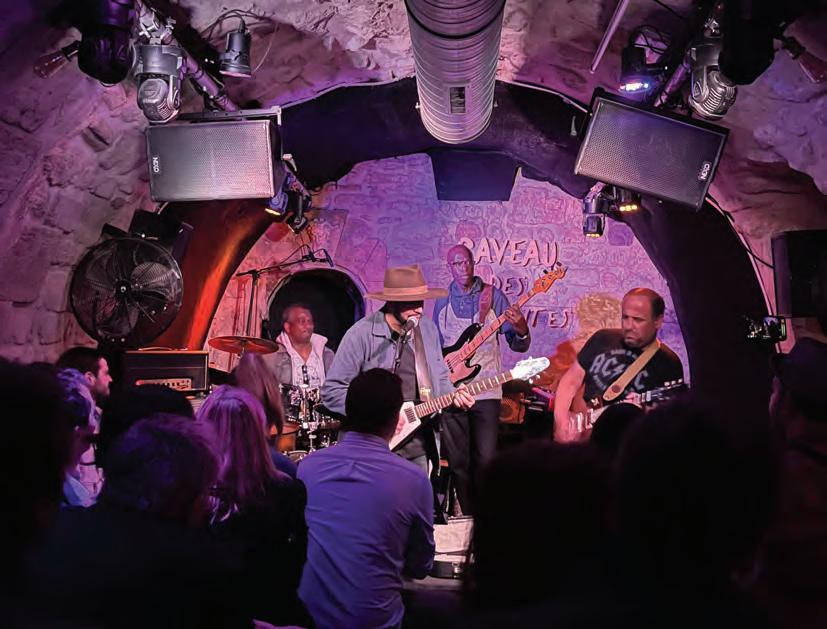

There are many different ways to immerse oneself in a new culture. One of the best ways, in my opinion, is through food. In every area of the world, food is a representation of the people that live there and their cultures. There are various types of foods that represent countries, and they are often fused to create different styles of cuisine. This fusion of different cultural foods represents, on a unique (and tasty!) level, the people that are members of that society.
Denmark is a small Scandinavian country that has recently gained more attention because of the new food scene emerging in Copenhagen. Some of the more traditional Danish dishes are smørrebrød (similar to an open-faced sandwich), brunede kartofler (caramelized potatoes), stegt flæsk med persillesovs (crispy pork, potatoes, and parsley sauce), and many other pork-based dishes. However, there has been a rethinking of these classic dishes, and this has caught the attention of the world. Smørrebrød was one of the dishes that I was not particularly looking forward to trying when I arrived in Copenhagen. When I thought of smørrebrød, I imagined pickled herring, and this did not hold much appeal for me. Regardless of my hesitation, on my fifth day in Copenhagen I tried it. While I will admit that it was not my favorite meal that I had during my time abroad, I was still glad that I tried such a classic Danish dish.
Early one October morning, I hopped on my bike and made my way to meet with a local guide to go on a Walking Food Tour of Copenhagen. While on the tour I had the opportunity to try foods and drinks that are characteristic of both the new Nordic cuisine as well as the classical Danish cuisine. Our first few stops were stands in Torvehallerne where we sampled a variety of cheeses from Arla
Unika. We then made our way over to Rørt, which serves different types of smørrebrød but offers their own take by topping the traditional rye bread with different types of pålægssalat (a spreadable salad). We sampled an egg and salmon pålægssalat paired with an orange wine. I enjoyed their unique version of smørrebrød with the spreadable salad topping on the more cracker-like rye bread rather than the dense, classic Danish rye bread. After finishing up in Torvehallerne we walked over to the Copenhagen Botanical Garden where we were treated to two different types of honey produced by Bybi. The two varieties were produced in different places, and there was a noticeable difference in taste. Our guide explained that this was due to the different flowers that the bees pollinate.
We then visited Aamann’s Deli and Takeaway where we were treated to four different smørrebrød: tomato, potato, organic egg and hand-peeled shrimp, and chicken salad. Judging by the continuous flow of people entering and leaving with their smørrebrød, it was clear Aamann’s was running a brisk business. Of the four, my favorite was the potato one with the contrast of the soft, boiled potatoes topped with crispy potatoes and the tang of the pickled red onions and radishes. While I was hesitant about the commonly offered egg and shrimp, I surprisingly enjoyed it as well.

After filling up on smørrebrød, we walked to Nørrebro (CNN’s 2021 #1 “coolest neighborhood in the world”) to Nørrebro Bryghus (Nørrebro Brewhouse), where we sampled different beers. Nørrebro was a particularly intriguing place to visit as it had an array of new restaurants, cafes, and stores. I wish I had been able to have more time to explore this neighborhood in depth, as there was so much to see and experience there.
We returned to the city center of Copenhagen to have a hot dog at Døp, where they have re-imagined how to make hot dogs. All of the hot dogs sold at Døp are 100% organic and are healthier than traditional hot dogs. Making our way back to Torvehallerne, we stopped at Sømods Blocher, a candy store that has been making candy the same way since 1891 and is the supplier for the Royal Danish Court. We sampled a delicious rhubarb candy, one of the most popular candies but not as popular as black licorice. Our final stop on the tour was Summerbird where we sampled flødeboller (a chocolate-covered marshmallow puff) and their specialty of amber chocolate.
In November, I had the opportunity to attend two cooking classes through Copenhagen Cooking Classes. The first was a brunch class where we made biscuits, a ribbon salad, eggs benedict, and a tomato pie. Most of those in the class were Danes, and I was able to speak with local people about daily life in Copenhagen. They also gave me recommendations on where to visit during my last few weeks there.
The next afternoon, I went back to the same place for a baking class. I was really eager to take this class, as the Danish baked goods I had eaten thus far were amazing. This class included more tourists, and we made two classic Danish pastries, frøsnapper and spandauer, which required us to laminate our own dough. The process of making these two pastries was new to me as I cook more than I bake; however, the teachers were great in guiding us.

I spoke with Gary, one of the instructors for the class, and he said that food is an “easy way into a culture because everyone knows food.” When explaining what is unique about new Nordic food, he stated that “new Nordic is making the most of what they have” using native ingredients. It is also about being creative and imaginative in how to use the ingredients. While there is a new movement in Danish cuisine, there is still a love and appreciation for the classic dishes. In particular, Gary mentioned the traditional Christmas meal that most Danes look forward to each year consisting of roast duck or pork, brown potatoes, red cabbage, and gravy.
Danish food has had quite a journey. Throughout my time in Denmark, I was able to learn about and taste many of the foods that make up the Danish cuisine. With my tour guide, cooking teachers, and visiting host family, I was able to experience what Danish food is and what it means to people. From sweets like black licorice, cinnamon rolls, and frøsnapper to things like smørrebrød, roast pork, and potatoes, I have sampled much of both the new and traditional types of Danish cuisine.
Tak for mad! (Thank you for the food)
– Madison Kaenzig de Denus

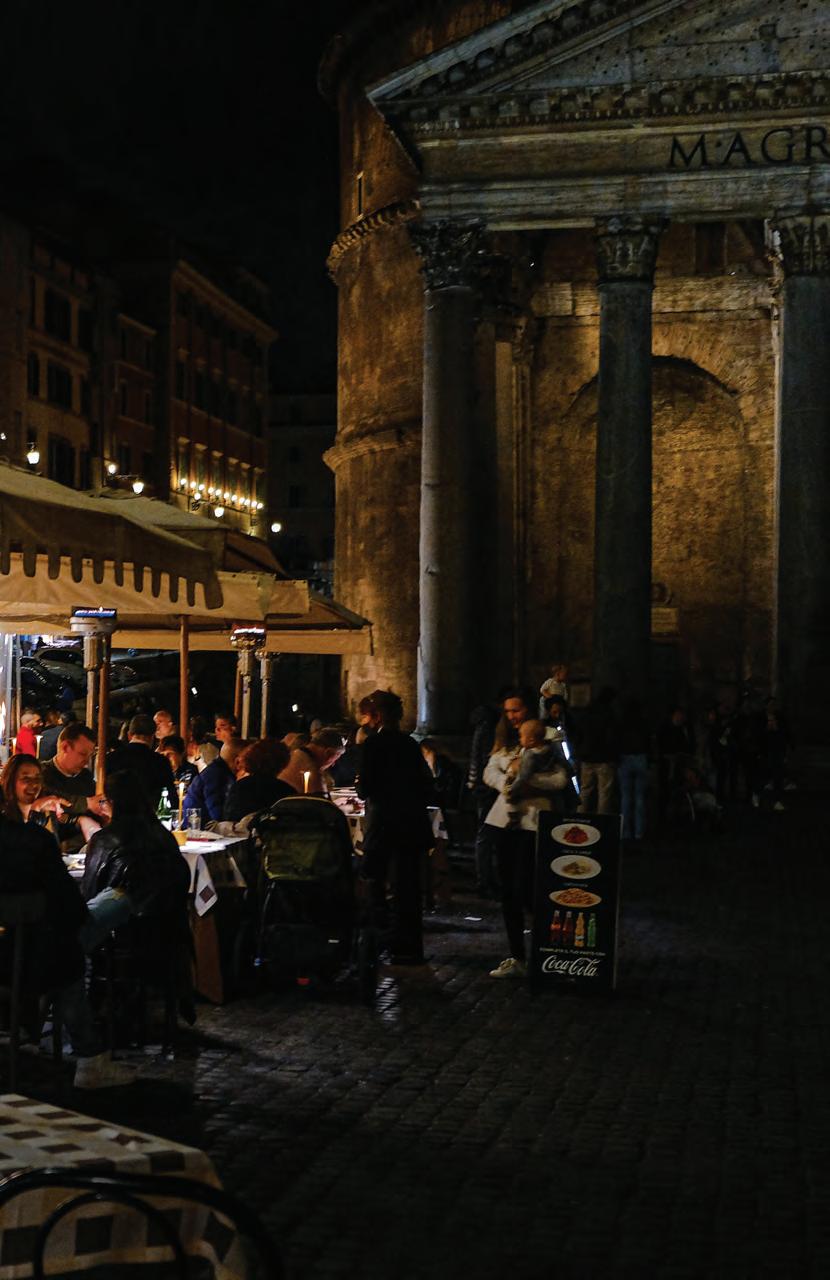
Dinner in Front of the Pantheon, Rome, Italy [Zhengrui Wei]
“Mathilde, are you ready to go?” I asked my host sister. “Yes!” she responded, with excitement. We were on our way to attend the Nøddeknækkeren (Nutcracker) at the Royal Danish Theater (Det Kongelige Teater) in Copenhagen - an outing made possible by the Student International Initiatives Fund (SIIF) grant I received. Since a young age, dance has played a fundamental role in my life, and I wanted to continue my dance passion in Denmark. Attending the Nutcracker, accompanied by my host sister, allowed me to deepen my exploration of dance in the Danish community. Growing up, I performed in the Nutcracker for many years, so it holds a special place in my heart.
On December 2, 2021, I stepped out into the brisk night with Mathilde. It may have only been 6:00pm, but darkness filled the sky. Although I had been living in Denmark for a few months, I was still not used to the early sunset. We set out into the nighttime, heading towards the “little train” –a nickname coined by my host mom – that takes us to the S-train, which goes into Copenhagen. Public transportation became part of my everyday routine throughout my time in Denmark. Although overwhelming when I first arrived, I can proudly say I ultimately mastered the Danish transportation system.
As Mathilde and I walked towards the “little train,” we carefully avoided the patches of black ice. “Watch out!” my host sister would shout. Finally, we made it. Clickety-clack, clickety-clack. The “little train” was approaching. The pale yellow doors slid open, and we entered the train. We each grabbed a silver handle and prepared for the train to proceed to our next stop. My body lurched forward as we took off, and I felt my hand tightly clench the handlebar to steady myself. Within a blink of an eye, we arrived at the station. The train screeched to a halt, and I hovered my hand over the open button. Click. The doors opened before us, and we franti-
cally sprinted to the S-train as we had 5 minutes before it departed.
We rode in silence. I was nervous. Despite living together for months, this was the first time Mathilde and I did something together without the rest of my host family. “Are you excited?” I finally asked. Quietly she responded, “Yes, I have never been to the theater before.” My eyes grew wide as I was surprised to hear this but honored to share this experience with her. Eventually, our conversation transitioned into talking about our shared passion for dance. I realized how similar our dance journeys were as we both started dancing at a young age despite the differences in our training. I trained in classical ballet, whereas Mathilde’s dance style was more similar to hip-hop. We traded dance stories and laughed throughout our train ride into the city.
Before I knew it, we arrived at Kongens Nytorv station and hustled off the train. The streets were buzzing with people at the famous Christmas Markets. Various stalls lined the streets, glittering gold lights sparkled, and the smell of fresh baked goods and gløgg (warm and spicy Scandinavian holiday wine) filled the air. Christmas was upon us. Given the Nutcracker centers around the Christmas holiday, it was magical seeing the ballet in a country that indulges in the Christmas spirit. Soon we rounded the corner, and Det Kongelige Teater stood before us. I stood staring, amazed. The lights illuminated the golden building. I pulled open the heavy glass door and was in awe of the extravagant décor - Christmas trees made out of pointe shoes, crystal chandeliers, and detailed architecture. I peered over at my host sister, and I can confidently say she was mesmerized.
We made our way to our red velvet seats. I sunk into the plush seat, and my eyes wandered around my surroundings: endless rows of seats, red silk curtains, and gold-gilded walls. The theater was filled with families, couples, and young people engaged in excited chatter. Soon a hush fell
over the crowd as the lights dimmed and the music began. My heart started to race; my legs were slightly shaking, and my body tightened. Breathe, I told myself. Although I was only an audience member, I felt like I was nervously waiting backstage in the wings moments before stepping on stage. My anxiety started to slow when the stage began to fill with dancers. I felt my body sink back into my seat and unclench. I was captivated by the movement that graced the stage.
My eyes were glued to the stage for the entirety of the performance, but my body was itching to move. As the music filled my ears, I was instantly reminded of the choreography of each part I previously danced in my ten years of being part of the Nutcracker. Since I was watching a different company, the choreography differed substantially. My mind was spinning a mile a minute, wanting to pay attention to every detail of the performance while simultaneously recalling the choreography. I could not sit still. My feet slightly moved left to right as I marked the movement. I wanted to jolt out of my seat onto the stage and join the Royal Danish Ballet Company. However, I knew my role as an audience member was strictly as a viewer.
Eventually, the dancers flooded the stage for the final bow. I peered over at Mathilde; she was grinning ear to ear. We both stood up and applauded the world-renowned ballet company for its incredible performance. Once the clapping came to a lull, we gathered our belongings and headed towards the exit.
Back on the train to head home to Hillerød, Mathilde and I chatted at length about the show. We rapidly fired questions and answers as we remarked on the extraordinary performance of the Nøddeknækkeren.
-Nicole Miller

Evening Boat Ride on Lake Como, Italy [Madison Medwid]
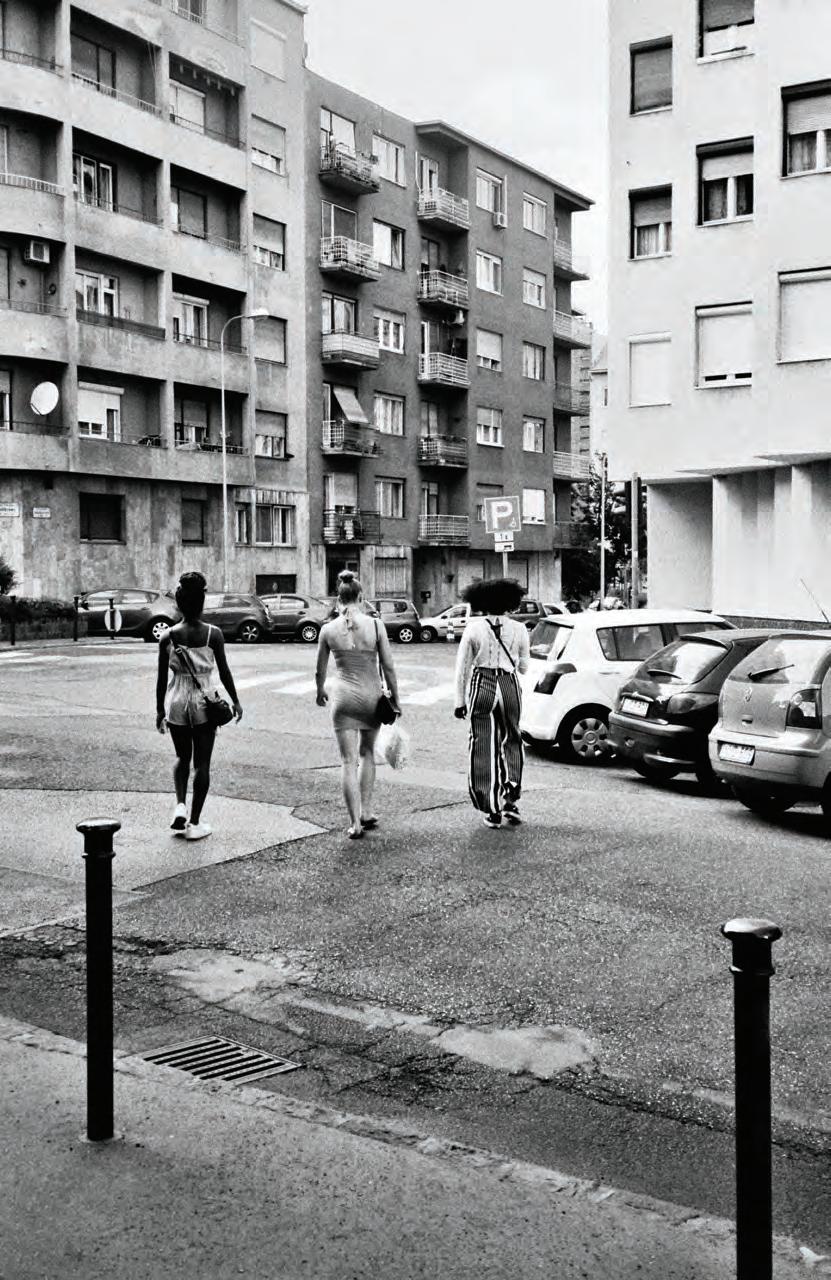
n. 1. a relationship in which a person, thing, or idea is linked or associated with something else 2. the action of linking one thing with another
Today, I woke up early, before the sun came up. And the sun comes up at 6:30 here, so I was up EARLY.
I milked the cows this morning, and it was challenging. My host mom told me I could only do one utter on one cow, but that was probably because I had to walk my host sister, Charity, to the bus as she was returning to school.
After walking Charity to the bus, I waited with my mom so she could sell the milk, and we had some breakfast before Michael came to pick me up. We picked up other students and had some sessions where we learned about outside catering, bodaboda groups, table banking, and the Woman’s Guild.
I headed back home, had some lunch, did the dishes, and read my book; then, Mary and I walked to town. We stopped at a corner store to buy a few things and beans for dinner. Tamika came over and made dinner with us. I gave her a Chicago pen, and she was so happy! She asked her mom if she could have a sleepover with the mzungu and her mom said yes, so we had dinner together and hung out for a while before heading to bed.
Tuesday was a very exciting day in Kenya because it was inauguration day for the new president. Mary made pancakes for breakfast then we headed to town to pick up a few things before the inauguration. First, we stopped by Tamika’s house, where I met her mom, grandmother, and broth-
er. It was so lovely to finally meet them! Then, we headed to the corner store to buy soap to wash the clothes. Before cleaning the clothes, we planted my avocado trees, and I was so dirty. Then, Mary and I washed the clothes with our hands in buckets, which was really fun.
Tamika, Dennis, Mary, Mom, and I watched the inauguration in the living room. We had fried potatoes (chips) for lunch and Mom taught me how to prepare chapati so we could cook it later. We walked to Mom’s friend’s house to meet his pigs and see his farm. He also had some baby rabbits, and they were SO cute! But I found out people eat rabbits here, which makes me pretty sad. We headed home, made chapati, and Dennis slaughtered a chicken (I hid in my room so I didn’t have to watch). We had a big feast for the president and then I headed to bed.
On Wednesday, we worked in the shamba in the morning, pulling up the dirt and adding manure to the field. It was challenging work; my hands and back were so sore. In the afternoon, we went to Charity’s school, where I met her classmates and teacher. I introduced myself in front of the

class and sat through a math lesson. Then I went to meet the principal before finding Tamika. Once I found Tamika, all the kids were surrounding me. I felt so popular. All the kids were touching my arms and hands and hair. And when it was time to go, they all followed me to the front gate, waving and smiling. It was truly unique. Charity wanted to come home with us, but she was coming back tomorrow.
Thursday was an exciting day in the household. In the morning, I used a panga (machete) to cut down maize stock to feed the cows. We piled the maize stock on the side of the road for some donkeys to come and pick it up. We had some corn from the maize stock, so my mom and Mary cooked it on the fire and taught me how they eat it. It was delicious. Today, Margaret came home and I finally got to meet her! We hung out all afternoon and waited for Charity to come back. I was so happy that I had even a little time to meet her and get to know her. When Charity returned, all the kids came over on my last night. I played the ukulele for them, they loved playing with my camera, and I made everyone chapati. We spent our last night together just hanging out until Charity started to fall asleep.
Friday morning was pretty sad. I packed up all my stuff, took a shower, and put my bags in the car to head to Annie’s house. We had a meeting with Michael, and I said some nice things about my family. We had a really sad goodbye and went to pick up the other group of students.
I learned so much about living in rural Kenya that I could never learn in a classroom. The hands-on learning components taught me so much about the world around me. They opened my eyes to how differently people live around the globe. I am so grateful for my host family, and I can’t wait to visit them again in a few years!
-Mary Baillos
Seventy-five miles north of Rome, Italy sits a small, idyllic city perched on top of a cliff. Orvieto felt like I had trespassed on a movie set: winding roads with family-owned bakeries, boutiques, and artist studios. Visiting on a school trip, my friends and I were walking down the main street and, out of the corner of my eye, I saw a giant pink cactus made of metal in an artist’s window. I told my friends to go on, and I stepped inside of the studio.
I circled the piece wondering what a pink cactus was doing in Umbria. I also thought about my childhood home in Upstate New York. My family has three vibrant animal sculptures scattered through our lawn with heads that bob in the wind. As I examined the seven-foot-tall sculpture, the artist approached me. He asked me where I was from, and as we chatted between broken English and Italian, I told him why I had come into his gallery. He told me he was inspired by artists from Arizona. Lifting his arm, he reached the top of the cactus and spun a pink steel flower. He described how the flower would spin in the wind if he kept it outside. A smile broke through my face, and I asked him about specific artists. He knew of them. All of them.
I told him about my family, the sculptures, and the southwestern art that adorns our walls. He was also smiling now. He found inspiration in the same small artists I’ve known about my whole life. I pulled out my phone and showed him photos of the sculptures in my yard and he was just as amazed as I was. “I’m the only one in probably all of Italy to do such sculptures,” he said. He told me his dream is to visit Arizona and be able to see his inspiration in real life. I told him mine is to visit Taos, New Mexico where my favorite artist lived for much of his life.
Mid-October was the time where I finally realized how far away from home I really was. The time differences and distance between my family and friends and I felt more drawnout than usual. Finding a piece of home in a small village on a cliff in the middle of Italy was the cathartic experience I needed to stay grounded.
-Caroline Mittleman

Home.
I studied abroad in Copenhagen, Denmark with the hope of coming home with an appreciation of a new culture and new friends. I had no idea I would be leaving with a family, too. I did not realize how homesick I would be in the first couple of weeks. I missed my family, my friends, my campus, and everything else I could not reach from Denmark. It was hard adjusting to a new city, with people I did not know, but without this difficulty, I never would have found my new home.
I was living in a Kollegium, a dorm essentially, with other students either from the US or Denmark. However, we were able to sign up to have a visiting host family during our time abroad. I had no idea what this would mean. Would I be seeing them once a month? Every other week? Or would we not connect with each other and only meet the one time? I received an email saying I had been paired with a couple, and that they were going to reach out to set up a time to meet. The first time I saw them was at a local restaurant a five-minute walk from where I was living. I remember nervously standing to the side of the building when I saw a woman pop around the corner.
“Are you Alex?” she asked me. “I’m Jocelyn, it’s so lovely to meet you,” she said as she embraced me in a hug that immediately felt like home.
She walked me around the corner to the back of the restaurant where they had already found a table on the patio. Ib introduced himself, and I sat down as we began to order coffees and brunch.
We sat at the table talking and laughing for more than two hours. As I walked home, I thought how lucky I could be to

have met such wonderful people. Ib was from Denmark and Jocelyn was from England, but they both lived in Canada for about 20 years before moving to Denmark. They lived 10 minutes away from me in Amager, a place I would get to know very well.
The next time we met, I came over for dinner at their apartment, where we had ribs! Jocelyn said she knew I must be missing American food, and she was right. The ribs were absolutely delicious, and afterward we had a traditional Danish dessert. While I was there, we set up a list of dates we would be meeting up for various adventures we would be going on. Ib had found all of these interesting places around Denmark to show me and printed a map so I could
see where they all are. I had no idea how much fun I would be having with them this semester.
During my four months there, we visited an alpaca farm, where I got to pet and feed the alpacas and see how alpaca wool is used. We visited a beautiful old town named Dragør, where all of the houses were a deep yellow, and some even had thatched roofs. We visited Lund, Sweden, where we walked around, visited a cathedral, and had lunch. We went to a Viking ship museum with actual ships that were refurbished and preserved that had been found outside of Roskilde, Denmark. Throughout all of this we became very close, and I frequently went to their apartment for dinner, movie nights, and to do a crossword puzzle on the couch. They even held a Thanksgiving dinner for me, where Ib made a turkey, cranberry sauce, gravy, green beans, and stuffing (I helped make the mashed potatoes). They have no idea how much this meant to me. Being away from family during the holidays is hard enough, let alone being in a different country, but they made me forget all of that as we sat down to our own family Thanksgiving dinner in Denmark.
Towards the end of the semester I began to think about how sad I would be to leave them. On the one hand, I had a remarkable time in Copenhagen, and I was anxious to see my friends and family from home. Yet, I could not bear to think about leaving Jocelyn and Ib and not being able to walk over each week for a family dinner.
In December, we decided to embark on some holiday festivities. We went to Helsingør, Denmark (where Hamlet’s castle is) where they had a Christmas market inside. It was absolutely freezing that day! The wind was blowing very hard, and we joked about how cold my hands and cheeks were. Despite the weather, we had a lovely time looking at the castle and Christmas decorations. The next day Jocelyn and I attended a beautiful Christmas concert at the Holmen Church. The singers had angelic voices, and, even though every song was in Danish, I understood every line.
There were only a couple of weeks left in the semester and Jos and Ib were going off to London for a week, so they asked me to stay in their apartment while they were away. During that time I would pack up my room in the Kollegium and stay with them for the last few days before I flew back to New York.
A couple days before I left, we had a Christmas dinner. Ib always made delicious dinners and that night he had cooked a goose with a variety of sides. I was so sad to be leaving them, but I was happy that I would get to spend as much time with them as I could before my flight. On December 17, they brought me to the airport. It took all I had in me not to start crying in the middle of the airport lobby as we hugged and said our goodbyes.
I am so grateful to them for the home and family they gave me while I was in Copenhagen. I could never forget them, and I look forward to returning to visit. They provided me with a home away from home and introduced me to Danish culture in the best of ways.
-Alex Davidson
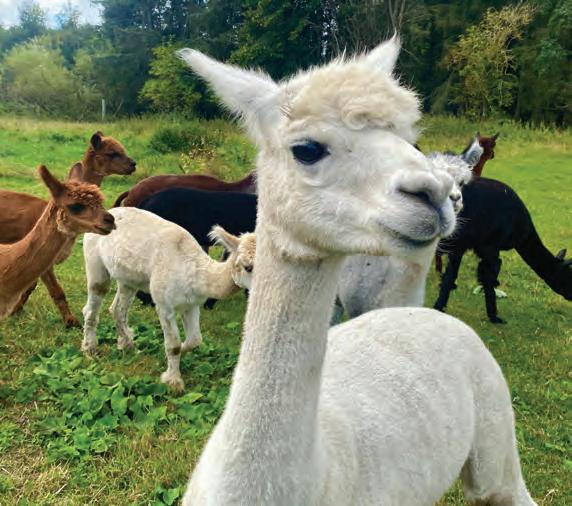
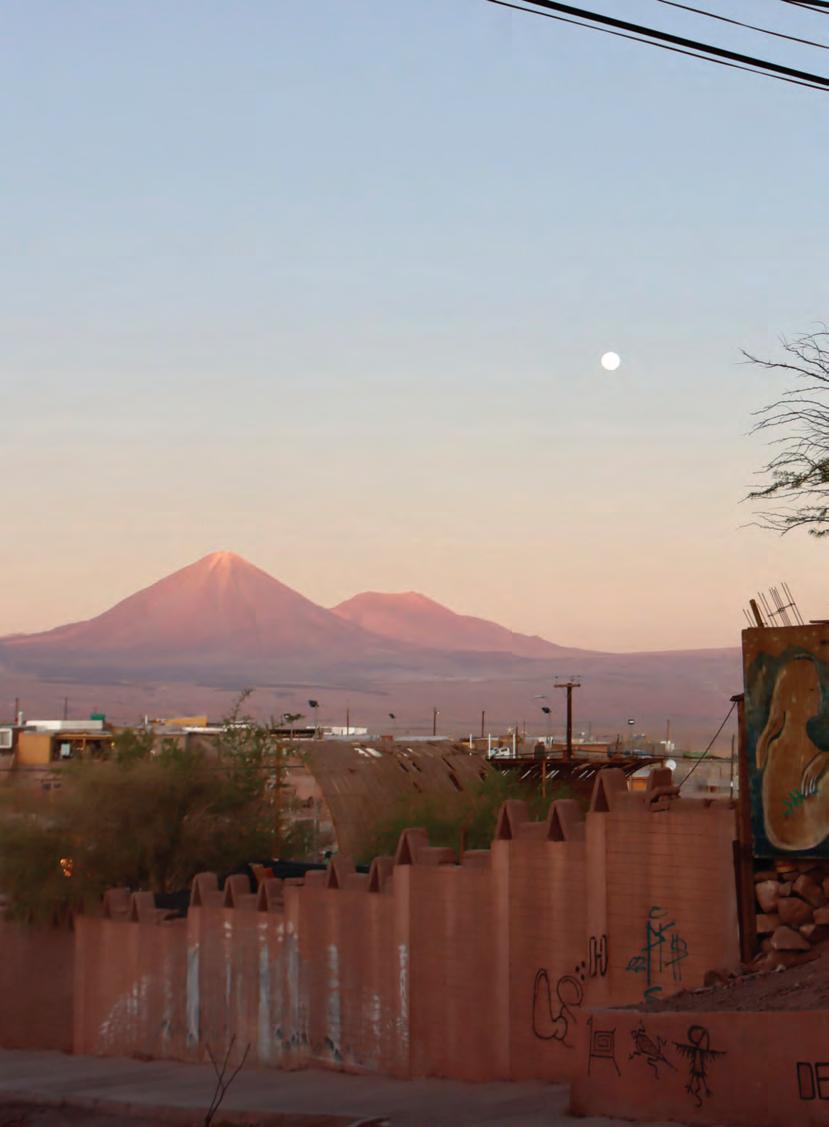
n. 1. the action of moving across, over, or through something
2. the act of being a place where two roads, paths, or routes meet
3. a passage through a border
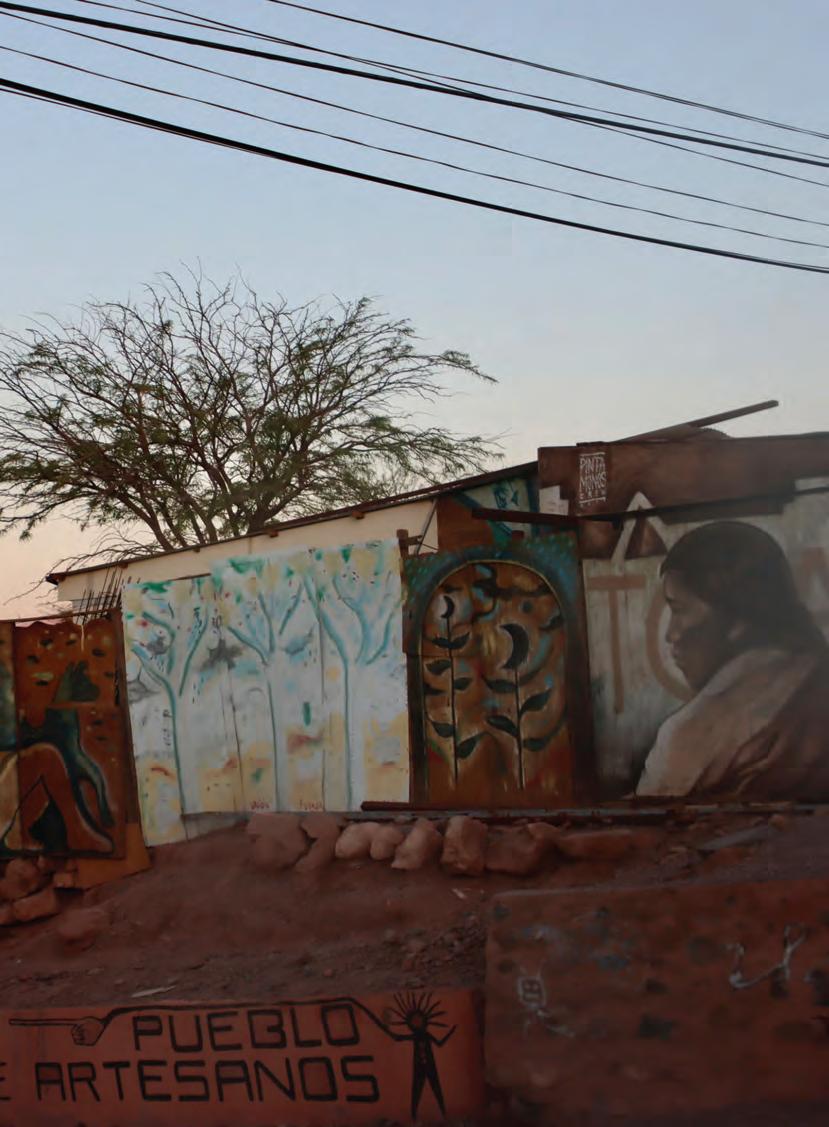
As an eleven-year-old entering public middle school, I arbitrarily chose to enroll in French class to fulfill my required language credits. This choice was motivated by nothing more than a dream to one day see the Eiffel Tower; I knew absolutely nothing about French culture, history, geography, nor politics. Little did that eleven-year-old know, that seemingly simple decision would forever change her life.
In the years since embarking on this linguistic journey, I’ve had three different pen pals; conversation has always been my favorite way to improve my linguistic competency. With these pen pals, there was always a reciprocal exchange of music, movies, and literature, which fostered and perpetuated my interest in and aspirations to one day visit France.
I spent the fall of my senior year studying abroad in Aixen-Provence, a three-and-a-half-hour high-speed train ride from the Eiffel Tower. By this point, I was still not quite fluent in the language, but definitely conversationally adept. I participated in the French Honors Program, studying the language and culture amongst students who shared my passion for French language and culture. I lived with a host family including a mother, Fanfan, her son, Gaby, and their family friend, Sonia. I also had two additional host sisters: one who lives in Brussels, Belgium, and the other in Paris, who visited often. While Sonia was fluent in both English
and French, the rest of the family really only knew the basics in English - hello, how are you, etc. As a family, we had incredible conversations about translation, linguistic integrity, and cultural tendencies, and while they helped expand my vocabulary and build on my confidence in their language, I was also able to help them learn snippets of mine. This reciprocity was an important aspect of my time in France as it reminded me that I was not alone.
Being completely immersed in a language can be a daunting challenge, and it absolutely was for me. Before departure, I often worried what would happen if I forgot how to say a word, or if I couldn’t quite perfect the French “r” sound. But it’s worries like these that take away from all of the potential for growth within a language.
During my time in Aix, I took advantage of all opportunities to speak with market vendors, tourists, local students, and, of course, my beloved host family. Through these conversations, not only was I able to learn about their language, culture, and town, but I was able to greatly increase my confidence in the language. Not a day went by that I didn’t start the morning and end the night with a conversation with Fanfan.
Aix-en-Provence was a town I had never heard of when eleven-year-old me decided to start learning French. It is now a town I call home, where I have a family and friends, and will definitely be returning one day. While Paris was my first inspiration to learn French, Aix will forever serve as my motivation to continue practicing and staying engaged with the French language.
-Julia Stockwin
La Rotonde Fountain, Aix-en-Provence, France [Julia Stockwin]

As much as I’d like to believe my travels have molded me into a worldly person who correlates aspects of my identity to various places in the world, I continue to find that wherever I go, it is somehow obvious that I am a “California Girl.” Perhaps it is the frequent use of “like” when I passionately tell a story, or perhaps the presence of “chill” and “hella” in my vernacular. When I inquire how someone could just tell that I was from California, they often refer to my evidently Californian fashion.
Fashion has always been an integral part of my identity. When I was young, I adored clothes, spending hours sketching outfits and dreaming that the fabrics and colors in my head could come to life. Shopping was my favorite weekend activity, dragging my mom to every store in the mall, thankful to have her attention amidst her arduous career.
As a woman today, it can be hard to feel pretty, to believe yourself to be beautiful. But when I look at myself in the mirror in an outfit I adore, my heart swells, and I feel happy in my own skin. To many, clothing is simply a requirement. For me, fashion shows the world who I am and, most importantly, is one of the few paths I have found towards self-love.
However, when I arrived in Rennes, France for my semester studying abroad, fashion caused a bit of an identity crisis. In the US, I am known as a bit of a fashion queen (by other people, not myself, I promise). But France is renowned for its superior fashion, so I feared that my love of fashion, a signature of my identity, would disappear amidst the universally impressive fashion of my French peers.
Sure enough, upon my arrival in Rennes, each day I fell in love with someone new, or more precisely, their clothes. The elegant fur coats, chic skirts, precise layering, beautiful scarves, shoulder-padded blazers, sophisticated monochrome color palettes, stylish boots, floor-length houndstooth trench coats, luxurious berets, cuffed corduroys, the surprising sexiness of tights under leather shorts. Mon Dieu.
Everyone looked so put together, their outfits elevated to a level Americans cannot reach – or, at least in my experience, are discouraged from reaching. Growing up in California, my vision of fashion did not align with that of my peers. With plaid skirts, thigh-high socks, and an abundance of dresses, my style was seen as too formal, girly, preppy. I was steadfast, refusing to change the essence of my style, sweatshirts and leggings not in my vocabulary, but I began to feel the weight of what is valued in Californian fashion. It is not stated outright, but I am a mathematically-minded person, and the ratio of compliments has indicated the importance of showing skin and looking hot (but in a I’m-not-trying-

to-look-good-at-all-I-just-woke-up-this-way kind of way). My typical silhouette was too “extra.” Even when I adored my outfit, I felt self-conscious, and the dreaded question of “Why are you so dressed up?” ripped apart a bit of my confidence each time. Slowly, I began to adjust my fashion, embarrassed to be dressed up, scared to be seen as “trying too hard.”
The French fashion norms had the opposite effect. Suddenly, I felt like my clothing was not enough, both figuratively and literally. I felt like my eye for fashion needed to be sharper, my outfits beautifully constructed masterpieces. And I felt like I was being judged for my California clothes, any showing skin feeling too revealing, over-sexualized. My American peers in the exchange program at University Rennes II have complimented my fashion, dubbing me “Chair of Fashion” (feels more professional than Fashion Queen - I like it). Yet I fear the judging thoughts tumbling inside the minds of the French. The Californian fashion ideals – which I had worked hard to adjust to for feeling

out of place – were suddenly the reason I felt out of place in France.
So, the question became: what is my true fashion identity? Amidst all the influencing fashion cultures, where do I fit? Does my fashion voice even have something to say? And I think the answer lies in how the individuality of French people does not get lost among the commonality of beautiful clothes. Though each person is dressed with an air of elegance that French fashion tends to produce, there remains an expression of individual personality. Every place has a unique fashion atmosphere, and it is normal to adapt to the culture of the place where you live. What is important is to nourish the soul of your fashion identity; to look in the mirror and see yourself, in your truest form, in clothes that make you proud to be you. Every morning, I am required to smile in awe at my outfit before I am allowed to walk out the door. I have adapted my fashion to this completely new culture I have found myself immersed in, yet I still feel like me – just a French version of me.
-Alexandra Hill

Despite many preconceived notions, I did not experience much culture shock upon landing in Freiburg. My main focus was adjusting to life in a new city which included obstacles such as learning the tram system, learning about different food, and expanding my vocabulary. It was only a few weeks later, when the frequency of my traveling decreased, that I realized that the adjustment process was going to be a little more than I had thought.
The first obstacle that I experienced was going to the grocery store in Germany. There is a significant difference between shopping in the United States and shopping in Europe. I made several mistakes on my first few shopping trips because of misread labels or the language barrier. For example, I bought a frozen pizza with pork on it once and was unable to eat it as I am a vegetarian. It was not possible to return any item at a grocery store in Germany so, in other words, I was out of money. I realized that shopping meant being very careful, so I spent many trips at Rewe with my phone out in order to translate labels and the ingredients.
Another aspect of grocery shopping to get used to was the speed of the cashiers as they ring up your groceries. Although I found it unsettling to try to bag my groceries as the cashier moved lightning fast, I did enjoy going to the grocery store because it was one of the most interesting ways to learn about a new culture. During my trips to the grocery store, I would wander the aisles and look at the variety of
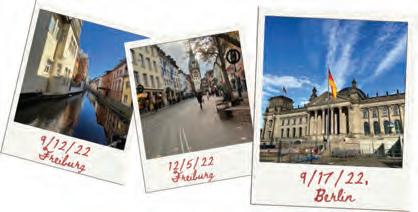
different snacks, desserts, and other goods that were offered. The size of the bread aisle and wide range of the different potatoes surprised me.
The variety of rules for residents in Germany was something to get used to. I was living in a Wohngemeinschaft, an apartment shared with four or five other students. We had a cleaning schedule and I faced difficulty because I had to remember that there were certain times when I could not vacuum. Germany has rules about noise which means that people cannot vacuum or listen to loud music at certain hours of the day. However, one of the biggest obstacles that I faced was not the language barrier or cultural differences, but rather the recycling system in Germany. There are many different categories involved in this recycling system such as cardboard, organic materials, glass, and mixed trash. The glass category was further divided by color. I would stand at the trash center by my apartment and try to figure out which glass goes where. The rules involving if something could be recycled or not also made this more complicated. I never fully mastered the recycling system, but I have hopes of doing so during a future stay in Germany.
The language barrier was one of the most significant parts of adjusting to life in Germany. The German language was all around me, and I had minimal knowledge of German. I worked hard and expanded my vocabulary, initiating conversations with my flatmates, classmates, and people at the store. By the end of my time in Freiburg, I was able to navigate life in Germany more easily with my improved language skills. I was able to ask questions, initiate conversations, and much more. I even gave a tourist couple directions using my improved German skills. However, my knowledge of the language did have its limitations. One day in November, I went to the bakery to get some freshly baked bread and I did not know how to ask for only a few slicesso I ended up going home with a whole loaf of bread that day. I was able to learn how to ask for a few slices of bread
and when I went back to the bakery a few weeks later I had a successful exchange with the baker.
My experiences in Germany taught me that there are two different aspects to adjusting to life in Germany: one that occurs naturally and one that you have to work on. When I first got to Germany, the language still sounded foreign to me. Everything was very new and there was a different lifestyle to adjust to. However, I adjusted to the language and the lifestyle over time. In fact, when I went to visit other countries in the European Union, the lack of German was an adjustment. The speed that the cashier used to ring up my groceries stopped being so jarring and I worked hard to learn about the recycling system.
All of these things helped me to adjust to life in Germany and to make Germany my home. My time in Freiburg was amazing and I was able to experience and learn about German culture. The semester was full of different challenges and experiences and I was able to learn what it means to be German. I can only hope that I am able to return to Freiburg, once a new and strange city that became home.
-Needhi Bajaj

n. 1. a thing learned by experience 2. an occurrence that reveals, warns, or enlightens
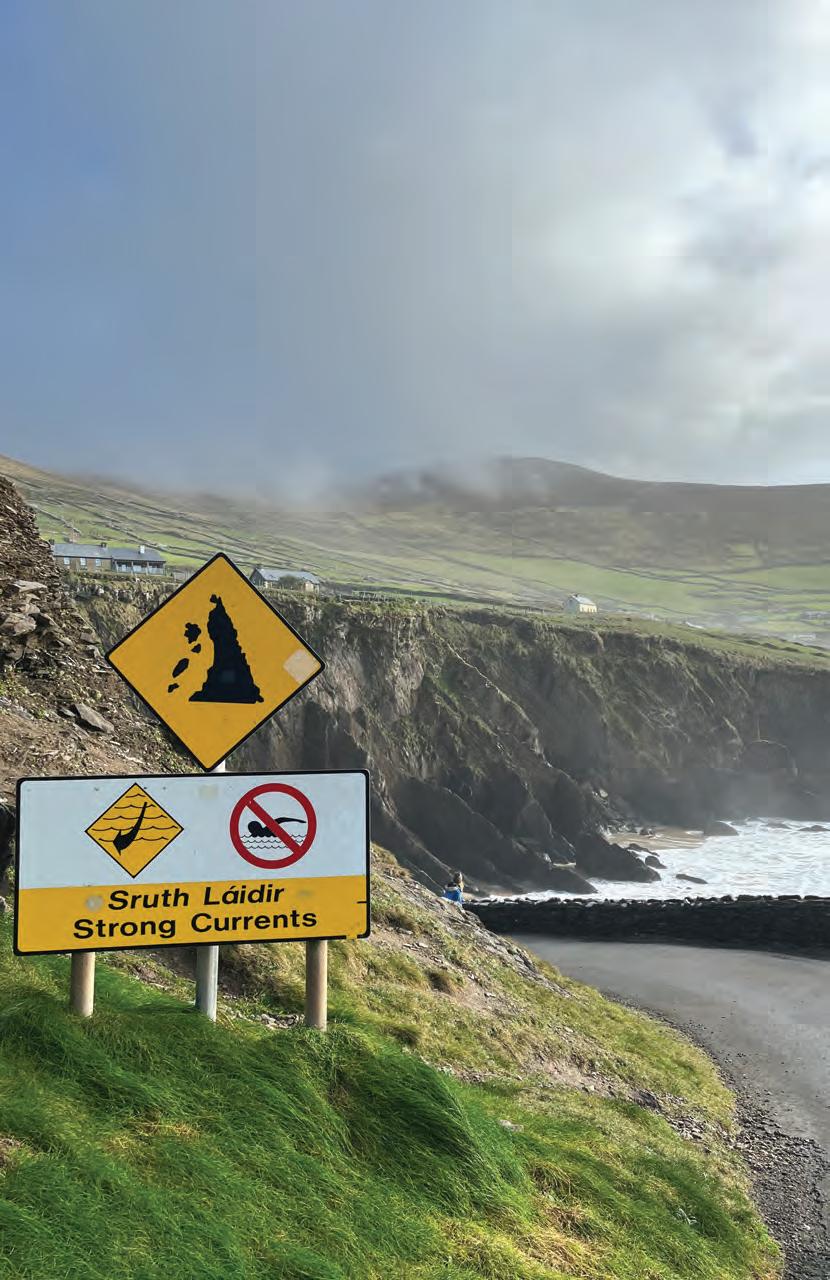
Dingle Peninsula, Ireland [Madison Medwid]
Last spring, while studying abroad in Freiburg im Breisgau, Germany, I had a phone call with my parents during which they asked me about some of the differences I noticed between living in the United States and in Germany. One of the differences I mentioned was that life in Germany seemed to be slower and more relaxed than in the US. While describing it to them I realized that I had not explicitly noticed this but seemed to have unconsciously settled into the slower pace of life. Growing up in New York City and attending an American university, I was used to constantly being on the go and constantly looking for the next activity, project, or job but this is changed as I settled into life abroad.
Freiburg is located in southwestern Germany in the state of Baden-Württemberg. It is a hipster, progressive city with a population of around 230,000 people, approximately 27,000 of whom are students. The university is located near the heart of the city and much of the downtown area’s shops, bakeries, and markets are populated by university students. Beyond just the students, it is a place filled with progressive, forward-thinking, kind, innovative, and hip people.
Germans - students and otherwise - know how to relax and take time away from work to slow down and appreciate life. While exploring the city after class, my friends and I would often see businessmen sitting outside enjoying coffee in the warm spring air or students lying on a lawn eating ice cream with their friends. Two of the most popular
hangout spots for students were the lawn outside the Mensa (cafeteria) and the Platz der Alten Synagoge near the city center. During the first few weeks after my arrival, I found myself stuck in my American ways of rushing around trying to cram as many sightseeing activities as possible into my schedule. I was worried about running out of time to do and see all the things I wanted to do, but I eventually slowed down. At some point things changed and my friends and I began to appreciate the slower pace of life. Our classes often ended early in the afternoon, and we made a habit of stopping by a coffee shop or bakery and then spending an hour or two sunbathing in the park before deciding what to do with the rest of our day. Most days included an hour or two for lounging in a park and talking with local friends. As summer began towards the end of my stay, I spent many days with friends in the local parks enjoying the warm weather or going swimming.
Living in Germany made me distasteful of the fast-paced American way of life. Constantly rushing around and looking for the next thing to do has often left me feeling stressed out both at school and at home. In Freiburg, I found myself more relaxed than I’d ever been and almost completely stress-free. It was like a weight had been lifted off my shoulders and gave me a chance to examine my life and its direction beyond college. Being back in the US has made me miss the slower pace of German life and I have attempted to incorporate some of it into my life. When possible, take the opportunity to slow down and appreciate the stillness and calmness of life before moving on.
-Sam Sobel
Before leaving for Germany, I made a commitment to use my time abroad to improve my German language skills. I took every opportunity there was to speak German. I assumed that these opportunities would not always be given to me. I knew I would need to position myself to create these opportunities, yet I never expected that by the end of my semester abroad I would have achieved my goal in a very unorthodox and shocking way. My German language skills developed through months of medical emergencies that greatly impacted my experience.
Two weeks after landing in Leipzig, Germany, I woke up unable to open my jaw with unbearable pain coming from my teeth. I knew right away that my wisdom teeth were ready to come out, but had no idea the extent to which this one minor surgery would affect my time in Germany. I went to the dentist to see what I needed to do and was immediately thrown into learning and having to advocate for myself in German. I was told that one of my wisdom teeth was growing down into my jaw causing damage to my nerves, and that I had about a week before any permanent damage would occur. I scheduled an appointment, dealt with insurance, and went to my surgery.
After the orthodontist finished the removal, he cleaned up his tools, cracked an ice pack, looked at me and said, “ok Schönen Tag!” I checked out with a swollen face, and hopped on the U8 (subway) to go home. Culture shock really set in at this point. The dentist who removed my teeth made me feel like I was overreacting and overly concerned about my health. I would say to the dentist that my healing process seemed prolonged and that something else was wrong. He
told me I only had a small infection caused by how deep the tooth was situated, and how difficult the extraction was. I would ask questions, to which he responded, “Es ist normal” every time. I am used to American bedside manners. To the Germans, if you are not dying, you’re considered fine.
I never thought about or could have anticipated the healing process after the surgery. For almost seven weeks after the removal, I had regular appointments at the dentist. I spent more time than I would have expected in waiting rooms for several weeks after, and even became a regular patient at the Dentalzentrum Pankow at the Garbaty Center. By mid-October, I came to understand that my pain and slow healing was in fact a result of a fractured jaw, and was not normal. I was unaware, as was my dentist, of the significant damage done to my jaw during the surgery. I had a broken jaw for almost seven weeks and had absolutely no idea. By midNovember, after being admitted to the emergency room until 3am, weeks of heavy antibiotics, filling out forms in German, constant appointments, dealing with insurance, and the uncertainty of everyday life, I finally had my last appointment.
As a result of these medical issues, I wasn’t able to participate in as many events during my program, or even travel as much as I had hoped. I missed a number of classes and I felt as though I was missing out on some of the fun that my peers were having. However, I valued this experience even through the pain and worry. I feel as if I experienced German life in a very candid way that tourists typically don’t.
When I reflect on the remainder of my time in Berlin after my final visit with the dentist, I recognize how comfortable I became with speaking German in almost any situation presented to me. I no longer practiced phrases before speaking. I wasn’t switching to English automatically even when I knew I could. When others would speak, I needed less time to create a response. I no longer thought about maintaining my goal because it was happening naturally.
I found myself living comfortably within the culture and language. Although a good portion of my time and memories created in Berlin consisted of hospitals and doctor visits, I would not have achieved my goal without it.
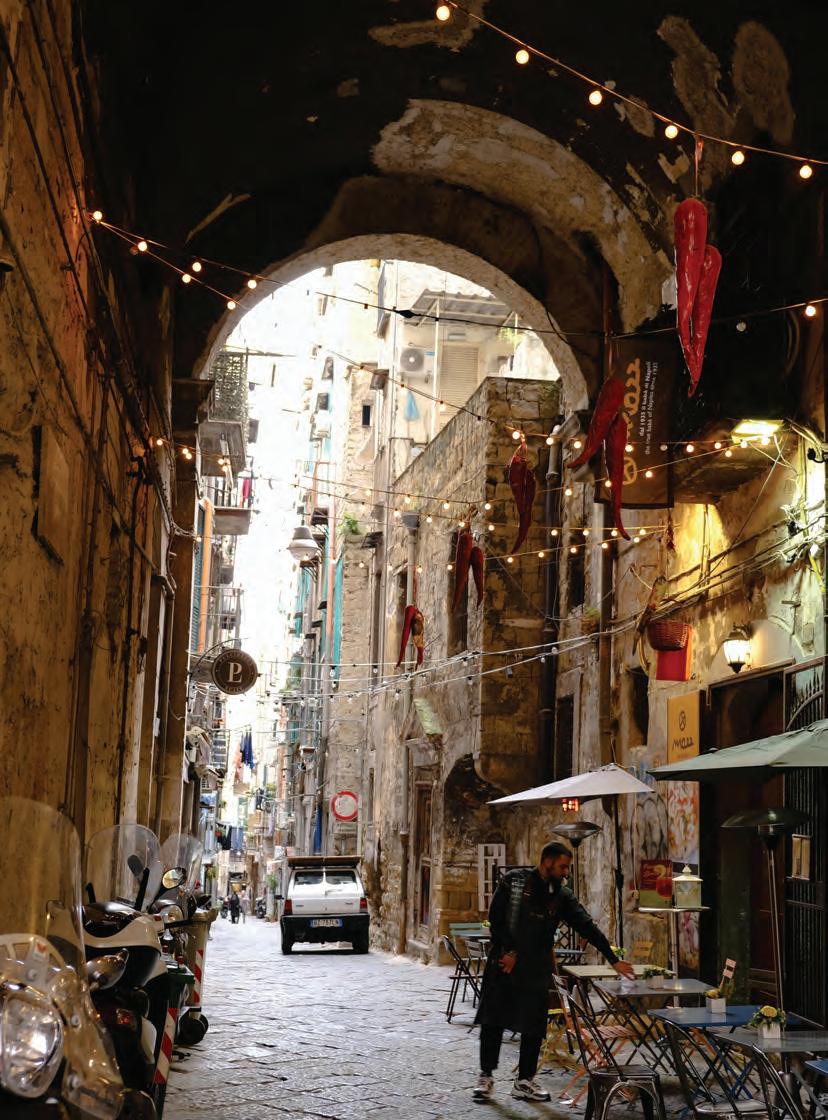
During my semester in Aix-en-Provence, France, I was able to dedicate a great deal of time to exploring the city of Aix as well as different cities throughout France and a handful of different countries. Before I embarked on any new adventure, whether it be something small like tasting the crêpes at a new café, or something bigger such as a weekend trip to Spain, my host mom, Fanfan, would always say, “Profitez-bien!” One can loosely translate this to mean “Have fun!” or “Enjoy!”, but in reality, the expression holds a stronger significance than any direct English translations.
I have come to think of this expression as an extension of the southern French/Mediterranean culture that encourages a relaxed pace of life - a pace at which one can truly slow down and enjoy the small things. This became one of my primary goals during my semester abroad. I committed myself to slow down and “profitez-bien” from each of my experiences, from walking to class to shopping at the weekly markets to weekend trips and everything in between. Committing myself to a slower-paced life was a challenge at first as it contrasted greatly from the traditional rushed lifestyle I am used to in Upstate NY and at Hobart and William Smith Colleges. I am constantly jumping from one commitment to the next, failing to take the time to appreciate the innate beauty of my surroundings.
Once I committed to this lifestyle and mentality, I found myself stopping to listen to the church bells each morning outside my homestay, conversing with the vendors at the market who showed up week after week, and enjoying the company of those with whom I ate at cafés because there is no rush to leave after the food is gone.
Now that I have returned to America, I am attempting to continue this lifestyle inspired by “profitez-bien.” While
restaurant scenes are more rushed, and meetings may be more time-sensitive due to the cultural differences, I am committing myself to slow down from time to time and listen to the sounds of my surroundings, enjoy the sights, appreciate the moment, and remind myself of Fanfan’s catchphrase: “Profitez-bien!”
-Julia Stockwin


n. 1. the product of a reflective surface or mirror
2. the effect or product of an influence
3. an opinion, realization, or thought formed as the result of consideration of an idea or experience
Since September, I have had the amazing opportunity to study abroad in the beautiful city of Seville, Spain, where winter temperatures don’t get much lower than 40 degrees Fahrenheit and almost no one speaks English. It is a city filled with ancient history, culture, and architecture that you can witness and experience every minute that you spend here. I could go on for pages and pages about how much I love it here, but I think that the best way to share my highlights would be to share my rose, bud, and thorn.
First, my rose, or the highlight/best part of my experience. To pick one moment out of nearly three months seems almost impossible, which is why my rose is having had the opportunity to live the "Spanish lifestyle." From eating dinner at 9pm and seeing families with little kids out running in the streets until midnight, to living with a host family and speaking Spanish all the time, my experience in Spain has felt very authentic. But one of the best parts of it all has been walking through the narrow, winding streets of Seville, exploring the many different neighborhoods and beautiful sites that exist on every corner.
To be honest, I don’t really have a thorn or a low part of my time in Seville. Sure, there were moments when I got frustrated or annoyed with myself when I couldn’t quite perfect my Spanish when talking to my host family or the people here. There were days when the constant stimulation of

speaking and hearing another language almost 24/7 got to be a bit much. But, for the most part, this experience has felt like something out of a movie; magical and unforgettable, and one that I will look back on for the rest of my life.
And finally, my bud, or something that I am looking forward to after my semester abroad, is returning to Europe to visit some of the countries and places I didn’t have the time to see. While I was able to travel around to countries closer to Spain, there are still many on my list that I hope to check off one day. But most importantly, I hope to return to Spain and Seville sometime in the not-so-distant future so that I can reminisce about my time spent here, and maybe get to show off the city I have come to love to some of my family and friends!
-Sydney Schultz
Since my first few days in Freiburg, I’ve noticed the dozens of ways the city showcases its vast, 500-year history. From the architecture to memorials, the city’s history is meant to serve as a part of its charm and attraction. It also serves as a window into the lives of those who died during the Holocaust. Freiburg is a part of a greater European memorial project called Stolpersteine or “stumbling stones.” These stones are placed throughout the city in front of the homes of Jewish individuals who were killed under the Nazi regime.
The idea to install these brass stones across Europe came from a German artist named Gunter Demnig who wanted to memorialize individuals who were sent to death camps. The project grew, and there are over 70,000 stolpersteine spread across Europe.
There are upwards of 350 stolpersteine within the city limits in recognition of Jews from Freiburg who died in the Holocaust. I try to stop and read each of the stones that I come across, as a small token of remembrance. Each stumbling stone represents one person, with some grouped together to represent an entire family that lived in the home. These families included children, parents, grandparents, aunts, uncles, and friends. In Freiburg, there are a number of homes that have several stones in front of them.
When I walk by each of these stumbling stones, I tend to think of my own family and friends. I also think about how if the Holocaust was to happen right now, my name, my friends’ names, and my family’s names might be on these stones. Taking these thoughts a step further, I’ve already seen the names of some of my family and friends on the
stolpersteine. There is no relation between my loved ones and the individuals who are named on these stones, but it is eerie seeing your mother’s maiden name or a friend’s name along the streets of Freiburg in memoriam.
I’m lucky in the fact that I am very close with my Jewish family, and have a committed and solid group of Jewish friends at home. My friends and I talk openly about our experiences with antisemitism on our college campuses and within our personal lives. Not having an inherently Jewish support system with me in Germany has made me feel uneasy at times, especially when I find myself walking across a brass stone that has my friend’s name engraved on it in the city center. Yet, I am still eternally grateful for the opportunity to be studying in Freiburg and continuing to learn more about Jewish life in Germany during the Nazi regime, as well as what my Jewish identity means to me.
-Sarah Palmisciano
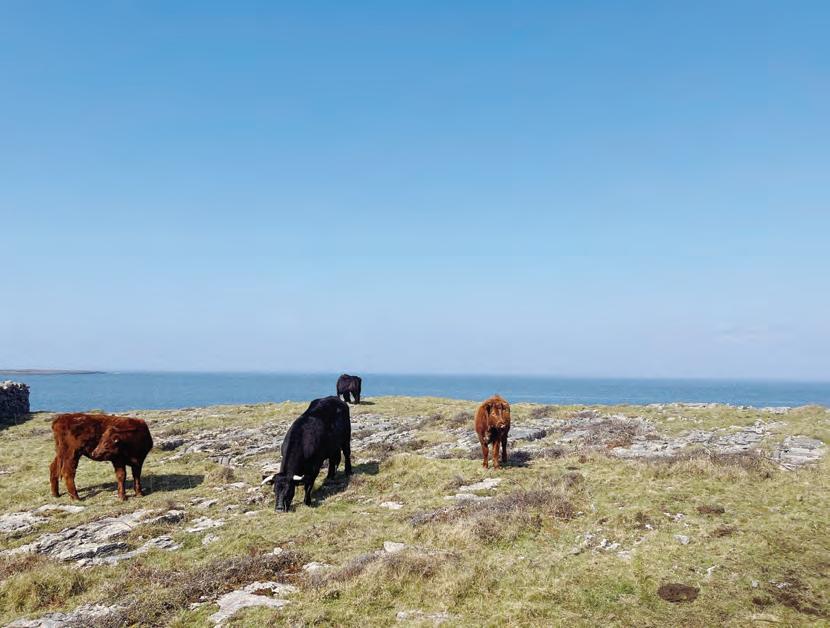
As I walk around Berlin, I see variations in restoration tactics and design. The architecture varies all over the city and within individual districts. Since Berlin has been destroyed in the past, there have been different architects deciding how Berlin should move forward. Some felt that the city needed to be wiped clean and rebuilt from the ground up with modern design. Others felt that the city should use existing materials and work with the foundations still present and construct a city made from the damaged remnants. Personally, I feel that the second approach is a better testament to Berlin's history. One of the things that makes Berlin so special is that it has been reborn and revitalized. The city has undergone so much change and has somehow remained resilient. Berlin is like a phoenix rising from the ashes.
I am fascinated by the ways in which the city acknowledges its past, while also looking toward the future. The Altes Museum on Museuminsel is a clear embodiment of this ideology. After being badly damaged by bombs during WWII, some wondered if the museum would continue to stand. Instead of completely reconstructing it with new materials, the building has a sense of wear to it – the columns are tarnished and riddled with holes from artillery, which gives a hint of its history. The museum also looks toward its future by placing large sheets of glass between the columns. This juxtaposition between the old and the new demonstrates the reality of Berlin well. The city is ever-changing and growing, but as it modernizes, it is important to remember the past.
The reconstruction of the Altes Museum with an emphasis on acknowledging its damage offers a lens into Berlin's re-
silience. The façade doesn't seek to completely cover its violent past, but rather embraces it. To stand next to a structure that has withstood such violence brings stability and tranquility. Berlin has endured tragedy and destruction, and the architecture should emulate this. Of course, new buildings are welcome and needed, but it's also important to display one's past. How a city and its planners choose to balance such issues is vital to a community.
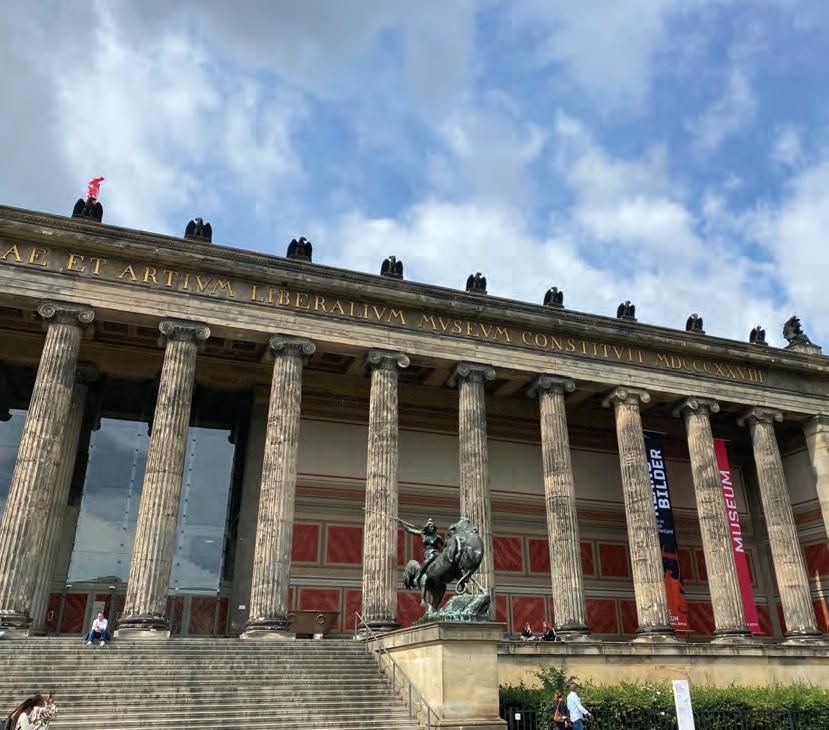
As of today, I am officially halfway through my semester abroad. I have lived in Freiburg for over two months and have just under two months remaining. What!? How has time flown by so quickly? I guess time really does fly when you’re having fun.
I was very apprehensive about studying in Germany. My limited knowledge about the country was exclusive to the Holocaust and the Nazi regime. Part of me is thankful that I was so close-minded before coming to Freiburg, because it allowed for even more self-growth than I thought was possible. Germany isn’t an abominable nation filled with cruel people and Swastikas flying outside of windows. It’s a beautiful country, and Freiburg is a youthful city filled with determined, creative, and inspirational people that I’ve had the pleasure of meeting. One of my flatmates, Ben, has become such a light in my experience so far. We share stories of our homes, and often discuss the differences between the United States and Germany in regard to policy and social issues. If I had let my close-mindedness deter me from exploring this program, I never would have met Ben. Trust me, that would have been a shame.
Another part of me was fearful that I would forget why I was here, to further connect to my Judaism. I would become too distracted in the fun I was having and wouldn’t be able to commit time to exploring the area and conducting research for these blog posts. Yet again, I was wrong. Not only have I explored Jewish history in the area on my own, but I’ve also had the opportunity to do so with both my program and my friends. Our program took us to the Natz-
weiler–Struthof camp and we’re also scheduled to travel to Nuremberg early next week to learn about the Nuremberg Trials that followed WWII.
My friends have also been very inclusive about me exploring Jewish history wherever we travel. A few weeks ago, we traveled to Prague for the weekend. On Sunday before our train home, we walked through the Jewish Quarter where we went to the Old Jewish Cemetery Museum. Prior to our arrival at the Quarter, I told my friends that I could meet them somewhere else in the city if they wanted to spend their time elsewhere. All of them disagreed and insisted that they would stay in the area while I explored the museum. One of my friends, Aidan, opted to join me in walking through the museum. I appreciate this gesture more than he knows because having a friend with me as we walked past gravestones stacked upon each other was really comforting. As we made our way through the museum, we chatted about what we were seeing and shared stories about our experience learning about the Holocaust in Germany.
Aidan and the rest of my close friends here have become my support system. After tough trips or discussions, they’ll ask how I’m doing. They’re always curious about my experiences here, and they read my blog! At home, I have a very solid Jewish network of friends and family that I can rely on to talk about experiences with antisemitism, celebrate holidays with, and confide in. While I may not have an inherently Jewish network in Germany, these friends of mine have provided amazing support.
-Sarah Palmisciano

A Winding Path Along the Edge of Seoul, South Korea [Grace
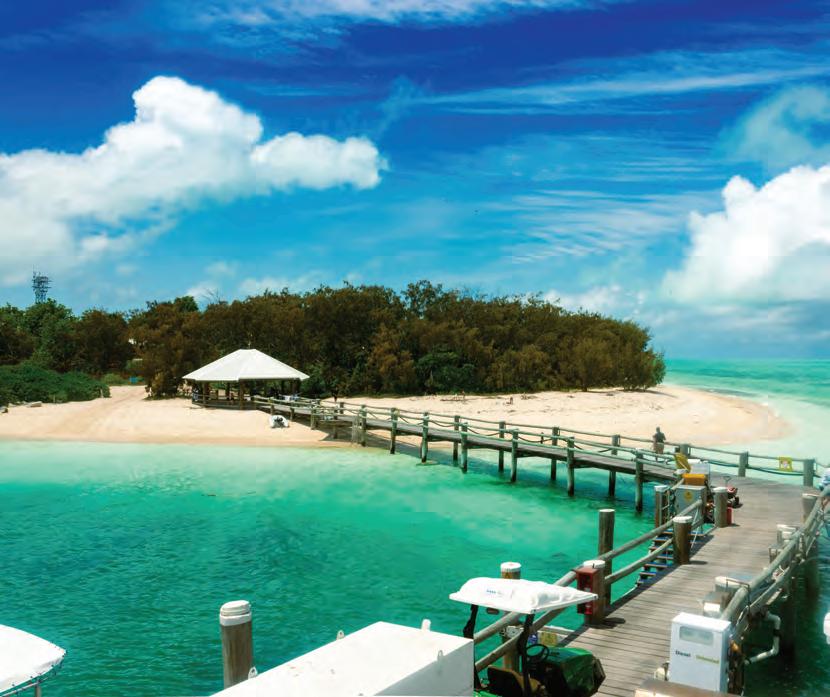

Cliffs of Moher, Ireland [Madison
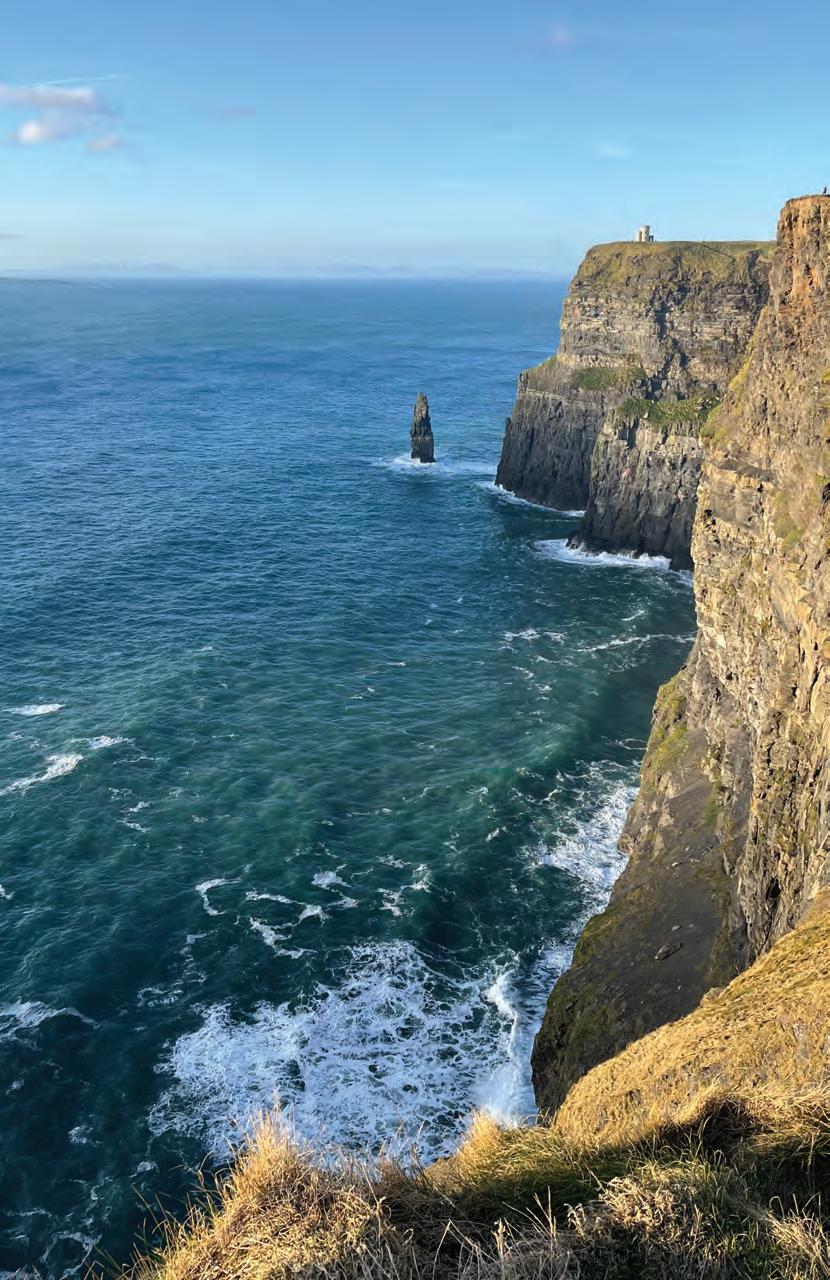


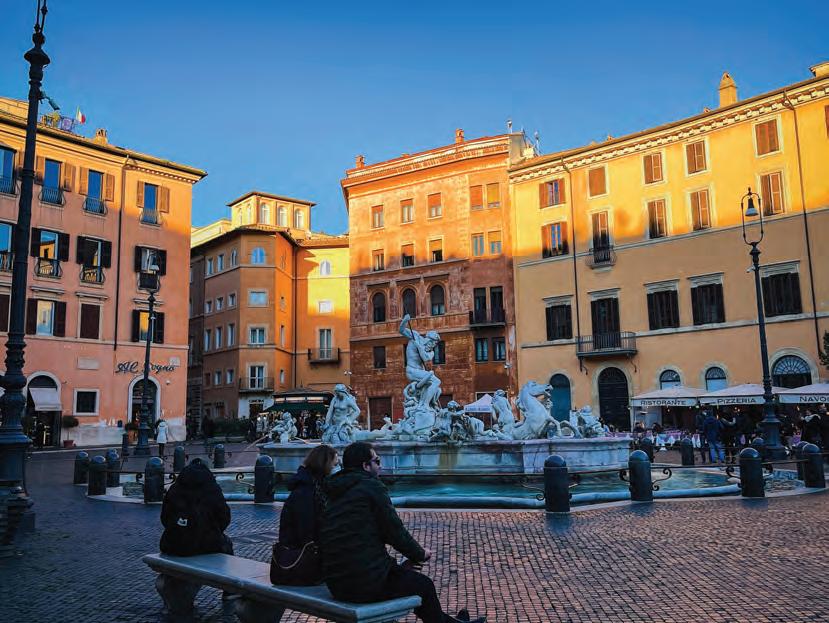
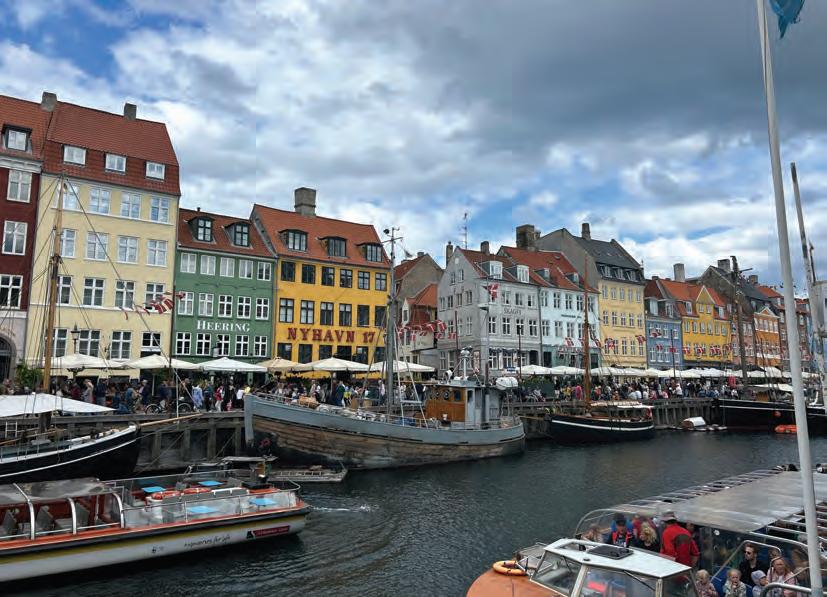
Ships in Nyhavn, Copenhagen, Denmark [Alex Davidson] Palermo, Italy [Johanna Golden]
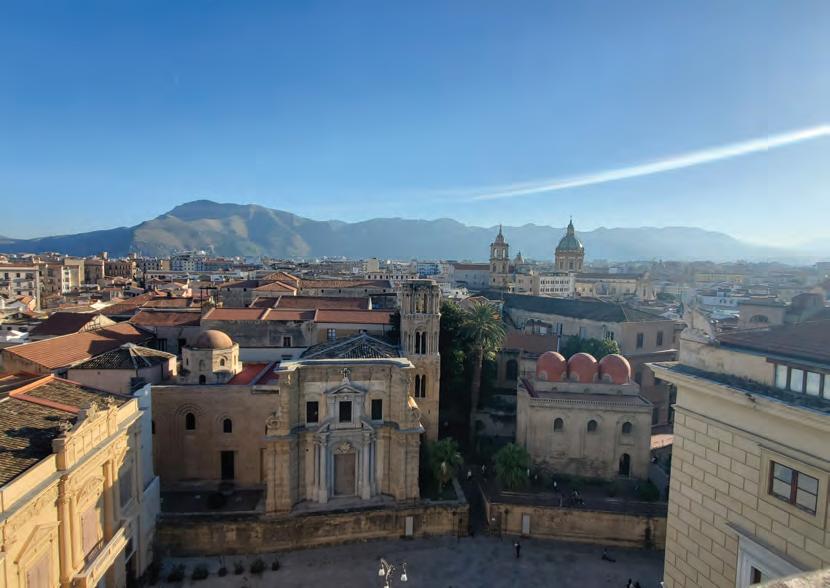
Cliffside, Orvieto, Italy [Caroline Mittleman]

Collecting Data, Girraween National Park, Australia [Andrew Painton]

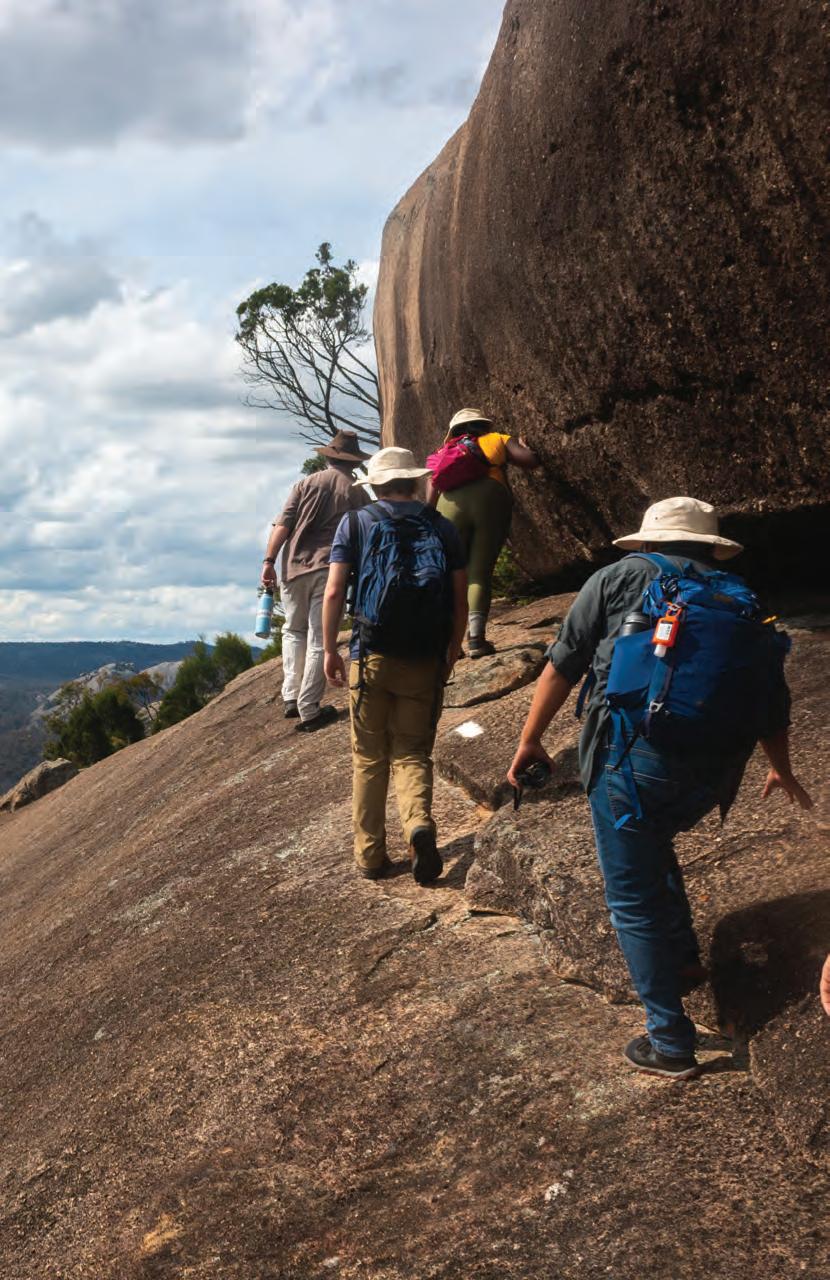
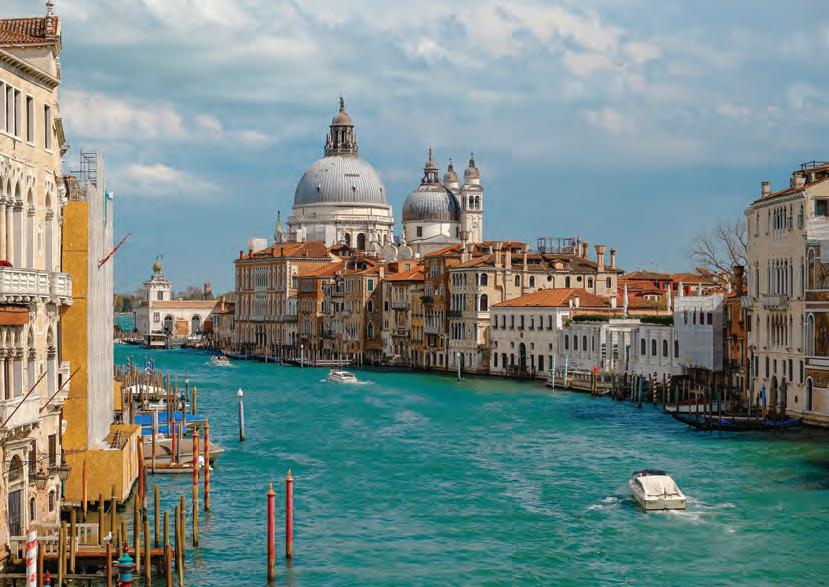
Canal
Cattle and Castle, Wales [Alex Barnosky]

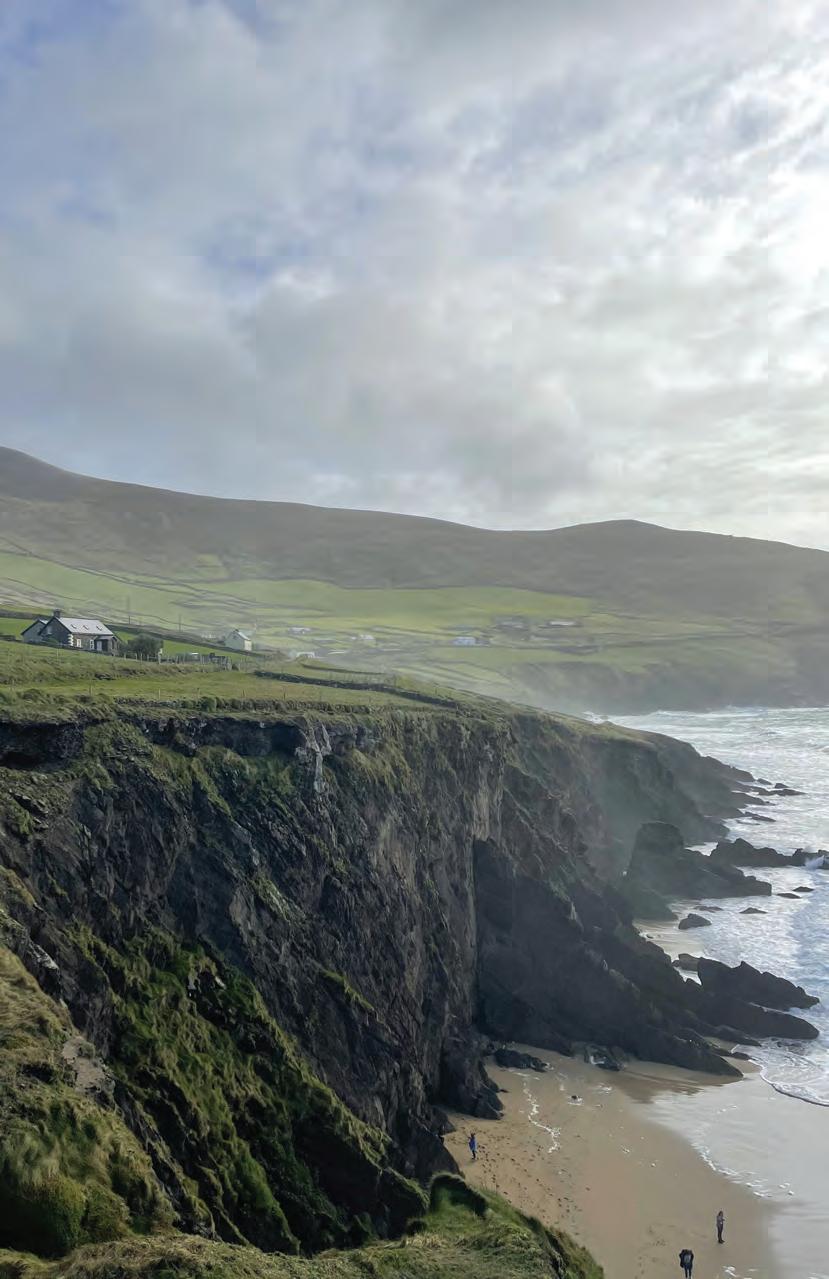
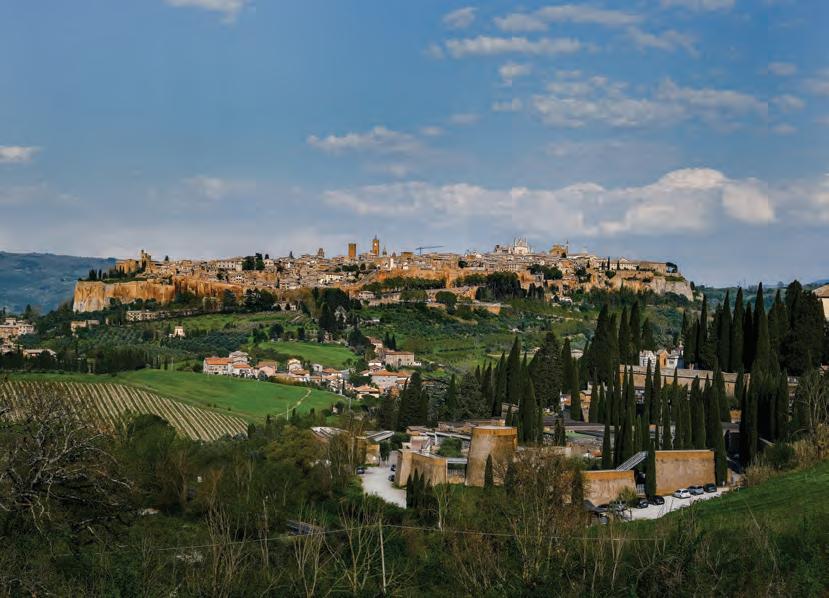
Orvieto, Italy [Zhengrui Wei]
Wild Horses, Preseli Hills, Wales [Sydney Schultz]
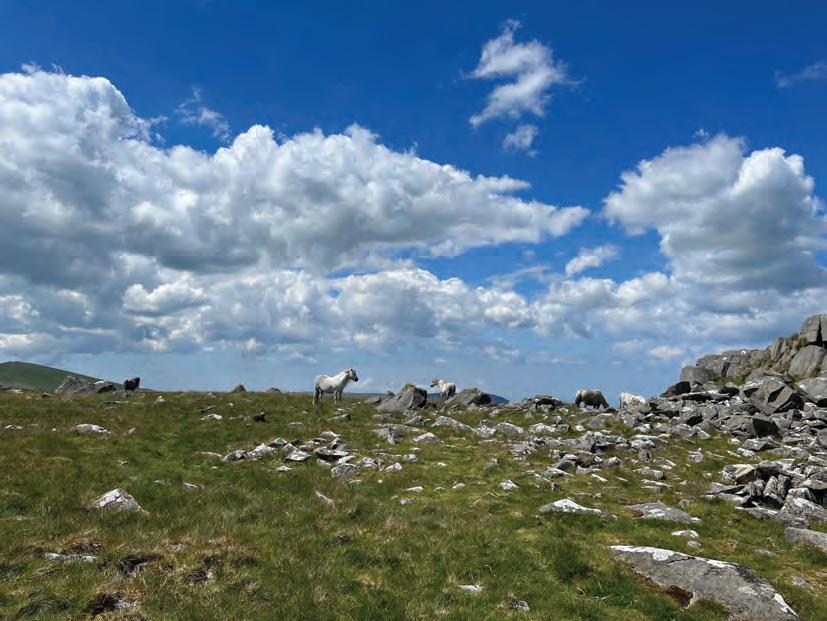
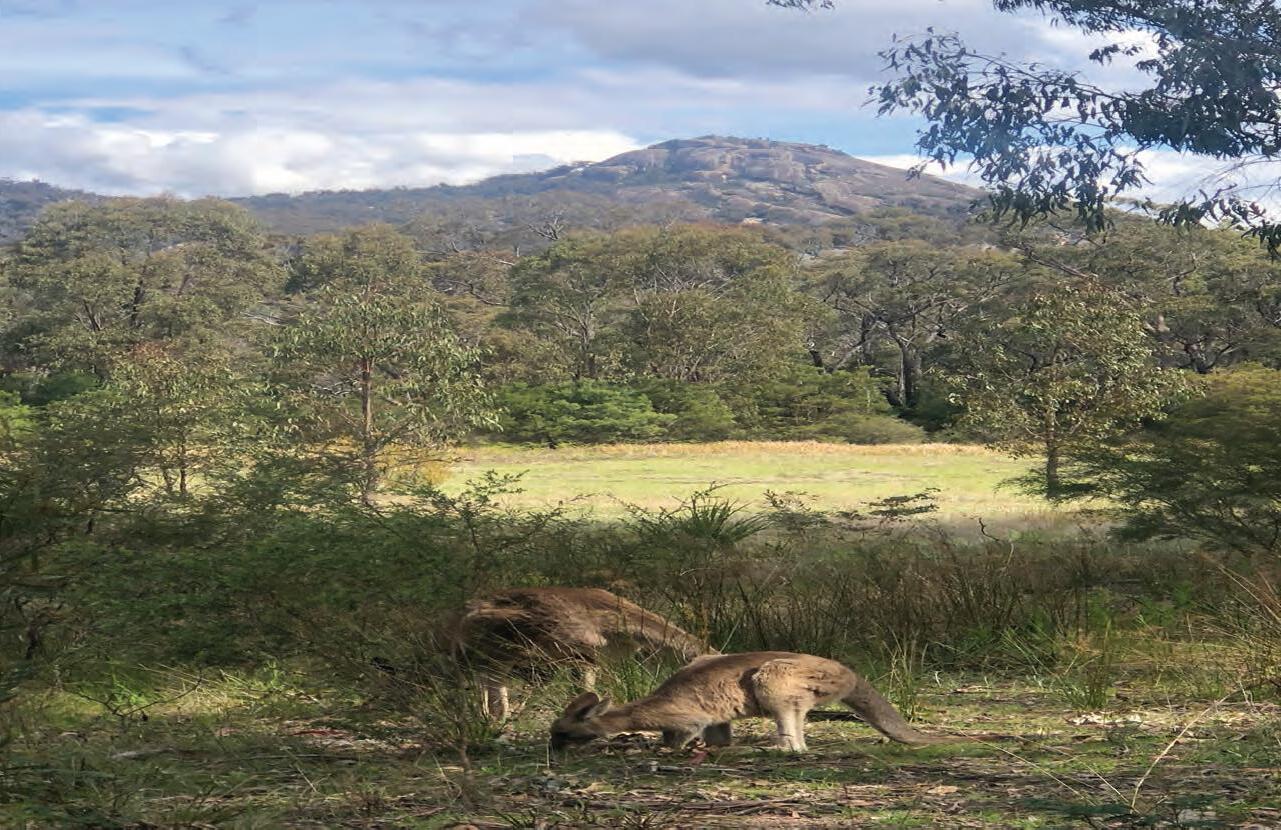



Class in Meteora, Greece [Zoe Abrams]
Baby Koala with its Mother, Brisbane, Australia [Andrew Painton]

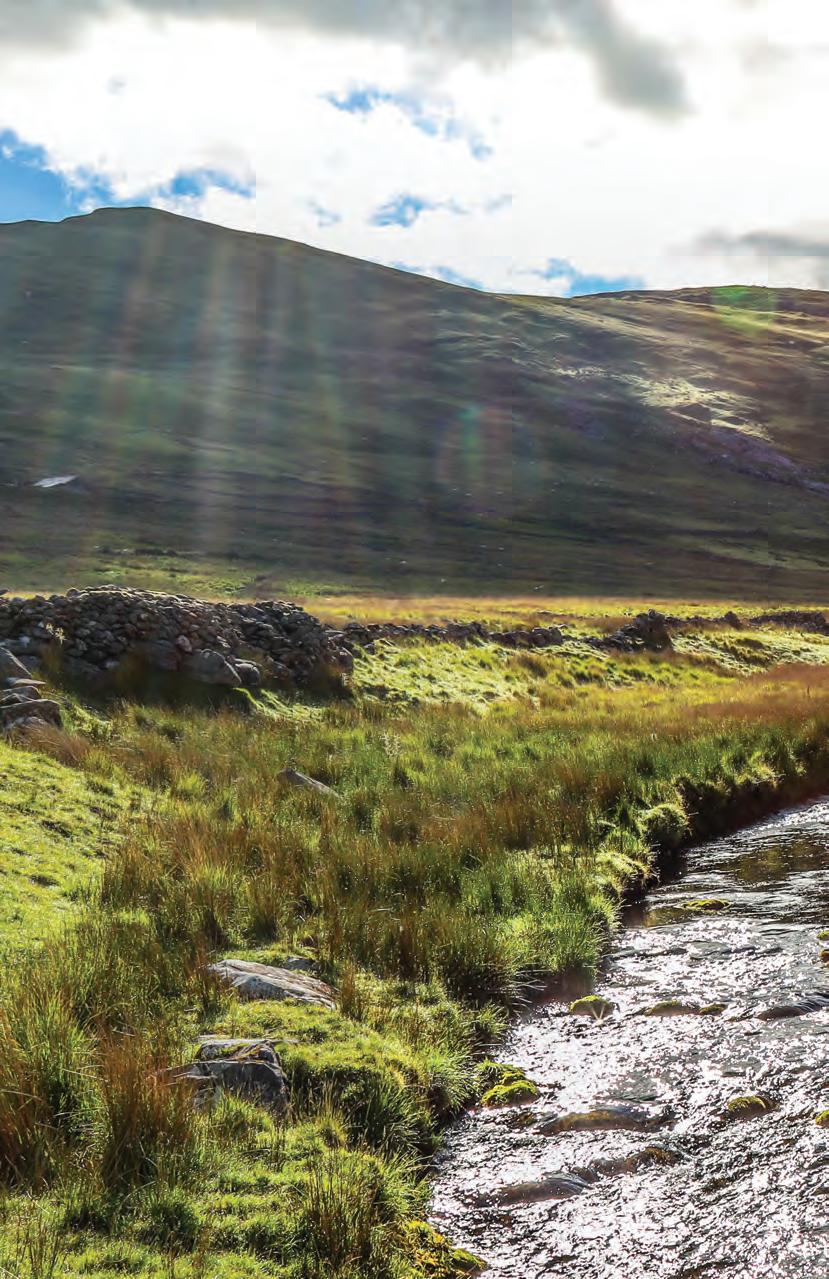

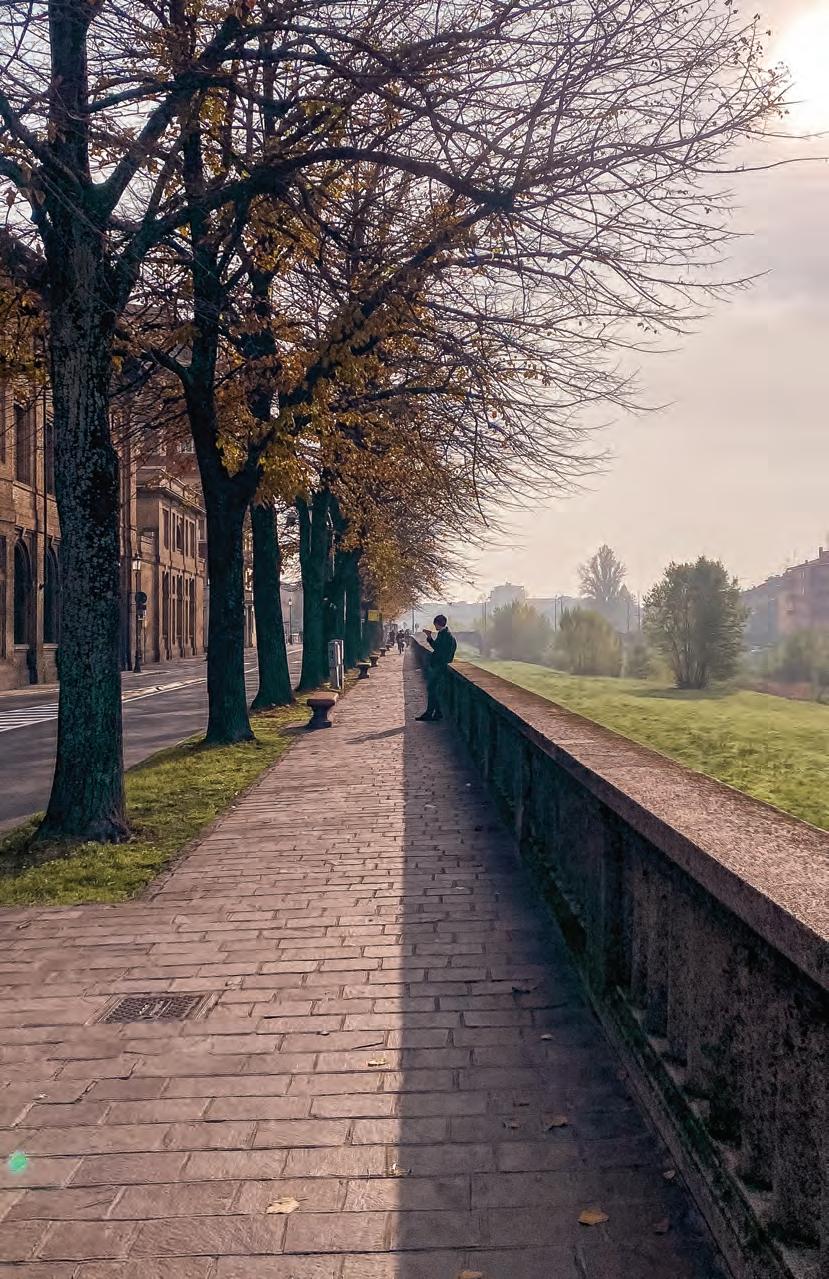
Morning Haze, Parma, Italy [Caroline Mittleman]

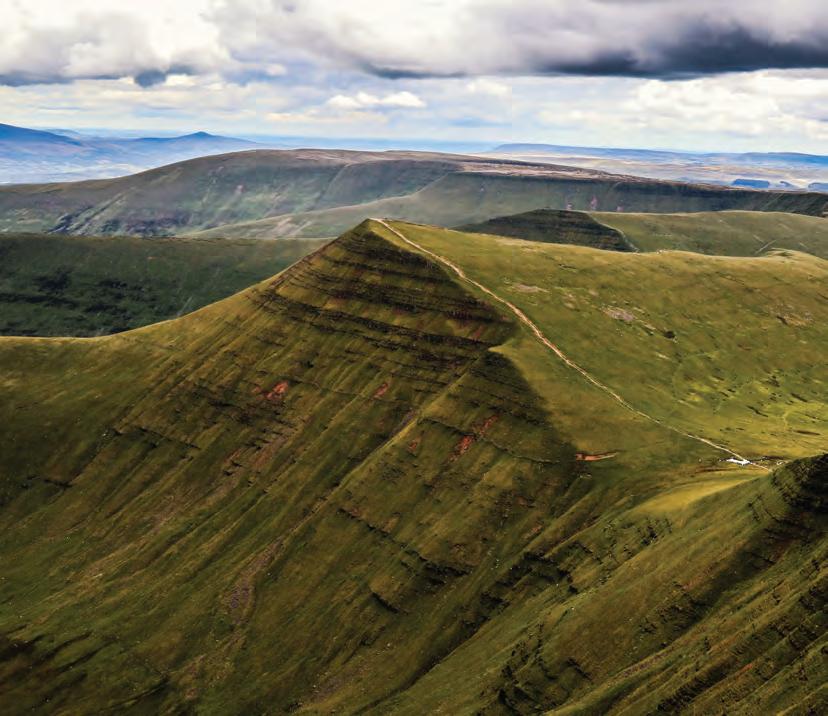
Café Cat, Cajón de Maipo, Chile [Katie Benvenuto]
Pen y Fan, Wales [Alex Barnosky]



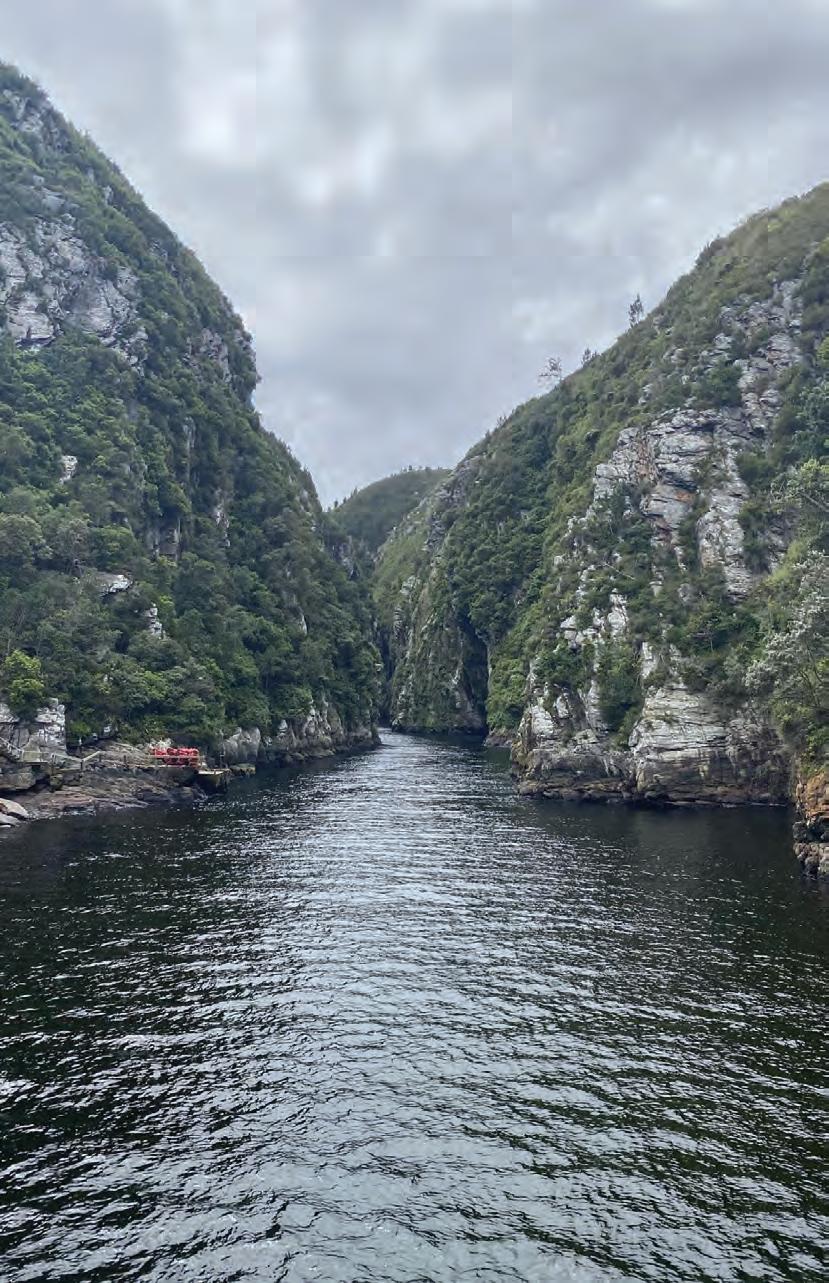
During my 5 months in Korea
I truly grew as a person
I gained a hobby for cafe-hopping
I got to watch my favorite singer live
Attend concerts for free through university festivals
Watch my favorite e-sports team dominate and fall when it mattered most in person
And even of course travel to iconic locations like Busan and Jeju
I learned that I may be a bit tone-deaf
Through the numerous midnight karaoke sessions
Find my newest addiction in bingsu and will miss it dearly when I am gone
However, what I will miss most are the people I met
From the convenience store lady that always spoke to me in English
To the numerous friends I made throughout my study abroad
To the girl that offered me a pack of Market O Minty
-Paris Isle
The laughter had died down, we were all quiet
But I liked the stillness, I could hear the ocean a little bit better now
We were only halfway into the group hike, and yet the excitement had died now, we walked quietly.
But it was a comforting silence…
All around us, we stood surrounded by impeccable nature. The sturdy mightiness of the mountains that carried us on their side, unbothered.
The sound of the waves gently crashing against the rocks. The rocks that were unbothered and unmoved despite our maneuvering through them.
It was the kind of hike that reignited a faith.
A faith in something larger.
The kind of hike that reminds you of the fragility of our being, and vastness of the earth.
The laughter came back as each person took their turn crossing the rickety wooden bridge.
We sat and rejoiced for a while when we reached the waterfall, marking the end of the hike.
We cheered the groups behind us as they climbed the rocks down to the waterfall.
We celebrated when dolphins breached over and over again, with grace. Almost in celebration with us.

Then the loudness died down again as we prepared to turn around and do it all over again.
But I liked the stillness, I could hear the ocean a little bit better now.
I can gaze up and try to understand the mightiness of the mountains,
The gentle crash of the waves,
The unbothered-ness of the rocks.
It was the type of experience that reignited a faith.
-Fatou Diokhane

Grapes washed in tomb-fountains; the way people stare; top-heavy stone pines and the occasional palm; unrefrigerated eggs; clothes stiff from the clothesline; clothes smelling like detergent from the minimart on my block; eating too much pasta and then getting Indian takeout three nights in a row; eating too much Indian takeout and crawling back to pasta; refusing the dancing light-up cacti for sale when I walk past the Vatican; trying to sound Italian when refusing the dancing light-up cacti when I walk past the Vatican so that maybe they won’t ask next time; the same with roses, fridge magnets, scarves; fridge holding only wine and cheese (not sustainable); welcoming autumn through the pumpkins at the market; missing autumn at home; the lack of blueberries; the lack of quiet places; sweet olives with huge pits; buffalo mozzarella, never in the fridge; streets like pop-up story books, movie sets; Lime scooter rides on empty roads at night; €2 bottles of wine; feet touching marble, stone, something that old; comprehending something that old…this is me pinning it down.
I understand Rome through these overlooked in-betweens; these moments of living, adapting, and observing. The tired
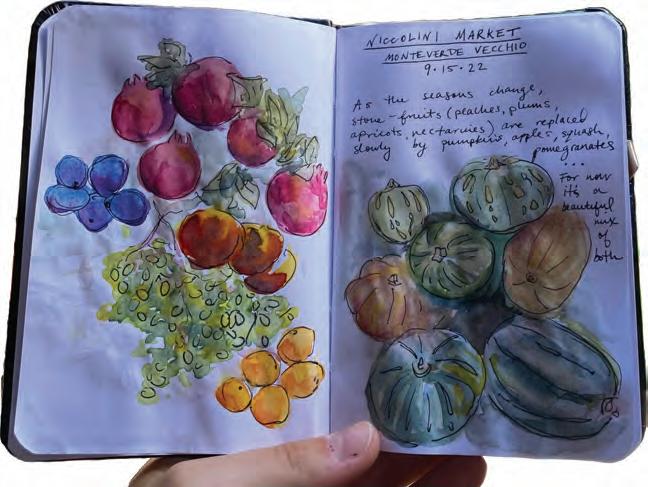
bus rides, impromptu meals, aimless night walks…
The noise and chaos of the city sometimes numbs me. Mainly, I blame the tourists - one of which I am, as much as I wish this weren’t true. I also blame the indigestibility of a city that is so dense with history. There is so much to retain and understand that I find myself feeling inadequate and unsure of how to even listen to it all - the dates, names, facts… they almost seem trivial and arbitrary when they are anything but. After a long day of back-to-back tours of the Colosseum and Forum, I remember joking with a friend that I would love to be a tour guide and lead a tour in which I spewed nothing but bullshit:

“Did you know that this rock right here <pointing to rock> was where Julius Caesar sat when he first had the epiphany to put croutons on the Caesar salad?” and “This small pebble, here, <pass it around>, is a piece of travertine that came from Emperor Nero’s 5 km foot bath where he also kept alligators, synchronized swimmers, and inadequate lovers."
Walk past any landmark in Rome and you’ll hear a storm of information, some interesting and useful, but some just noise. There’s so much that I’ve found myself just wanting to put music on and stare at what’s being talked about instead of participating in its analysis. Stare and notice and be silent. Sometimes I just want to say “I like it” or “I don’t like it” without any need for further explanation. Sometimes I only want to be a human having a sensory experience. And I don’t want to articulate that sensory experience to, or for, anyone.
In Rome, I’ve come to dwell in the still moments, raw reactions, and unfiltered, unimpressive responses. When I first saw the Vatican I remember saying “Wow” and that was all. I was free from the need to make a nuanced or intelligent comment. In this way, appreciation for Rome takes on a new form for me. I’ve loosened myself from expectations of getting it all down. I’m weeks late in my journal. Still learning bus stops. Missing chunks in Rome’s many timelines. Instead, I find myself staring, noticing, experiencing, painting, and marveling - feeling small and incapable of holding it all.
-Claire Kapitan

n. 1. very brief period or exact point in time
2. a particular stage in something’s development or in a course of events

Clouds over Positano, Italy [Madison Medwid]
After an afternoon of Italian, my mind wandered down the back paths attached to the Scuola. I wasn’t really paying attention to see if I was taking the correct route, simply checking to make sure I was not walking in the opposite direction of my destination.
During the first weekend in Rome, my aunt and uncle took me on a walk, not even mentioning where we were going after we visited La Galleria d’Arte Moderna that afternoon. After turning a few streets, my aunt pointed out the Trevi Fountain. THE Trevi Fountain. A great wonder was right in front of me and we had simply stumbled upon it on a stroll. It was larger than I expected. I was surprised by how clear the water was and how clean it appeared in contrast to the ruins of the Forum or to crumbling sites in Ostia Antica. The defining details of the structures were jaw-dropping, from the grand columns down to the carvings of the coral toward the right side of the fountain. On my daydreaming walk to the fountain in late September, it still had the same effect on me.
Even crowded with too many people fighting to take pictures and make their wishes, I still felt the wonder and curiosity sparking within me. I took my habitual pictures, none of myself because I want to save that moment for another day, and found a spot off to the side on the ledge overlooking the fountain. Away from the other tourists, away from the guys always trying to sell you something, and just by myself. Me, my mind, and Taylor Swift’s Folklore album playing on shuffle through my AirPods.

On average, especially before COVID slowed down tourism, Italy hosts about 65 million tourists a year. As the thirdmost visited country in the world, and home to some of the great wonders of the ancient world, it’s understandable that the streets and sites of Italy and Rome can seem claustrophobic and small as we navigate within them. Even among the crowds that surround the monument, it still feels special, and almost magical.
I would look for faeries when I was younger, especially when I visited Ireland when I was seven. I would peer under the rocks and through the grass, hoping I would spot a glimpse of the magic or hear the twinkling of their laughter. When
I returned three years later at the age of ten, I still secretly looked between the cracks of the fort and distanced myself from the rest of my family so the magic would reveal itself to me and to only me. I do the same thing at the Trevi Fountain with how I distance myself on my solo walks and how I’ve been waiting for the moment to throw my coins and make my own wishes. It feels wrong to do it more than once during my time abroad so I have been waiting for the right moment. I have waited for a moment when time seems to stand still and the streets are not congested with tourists who are fighting their way to the front.
As we discussed in class, there is a myth surrounding the coins people toss into the Trevi Fountain for good luck. If you toss one coin, you will return to Rome. If you toss two coins, you will find love in Rome. But none of us knew what the meaning was behind throwing a third coin. Would it bestow more luck upon you? Would it strengthen your wishes? After not coming up with a solution, I decided to do some research and I found a few websites saying that throwing a third coin would result in marrying the love one would find from throwing the second coin. Unsatisfied with a solution that may result in an outcome I do not want, I decided to create my own. I propose that when you throw a third coin in the Trevi Fountain, you will find yourself in Rome. You will find yourself on your solo walks over the bridge on your way to school or to the Trevi Fountain as the sun begins to slip away. And that you will find yourself in a place that is different. Not better, but different.
As I sat on the edge looking down on the fountain, watching the sunset and people scurrying through the streets, I was at peace and was calm, emotions that have grown to be unfamiliar to me. So unfamiliar, it seemed wrong as I felt weightless without the crushing anxiety that had filled my soul and mind for too long. As exile plays out of my AirPods, I think of what I want to wish for when I throw my own coins.
-Clare Burke
Light and Shade, Rome, Italy [Zhengrui Wei]

I plan ahead. To an extent. Chaos and change can be controlled. I don’t show up to the airport without a ticket. Well, I could, but that’s if I’m heading to Vegas to pursue a career in gambling. Big decisions in my life should occur after careful analysis. I am a chess player, after all. The Russian side of my family brought the sport into my life, and it has been in my life for more years than not. Chess is not just a game for me. It is a lifestyle. A lifestyle that is so fundamental to how one processes problems that it never truly fades. I left the competitive aspect by the wayside once I embarked on my adventures as a third culture kid.
I am used to change. I mean, I am a Russian and Mexican mix, living in two worlds since birth, who left home at seventeen to study in a completely new country in the middle of fields and sheep in South Wales. My time in Canton, New York followed. Middle of nowhere. Why would I do that? A professional dart player couldn’t hit Canton on a map if he tried. I moved between six different houses in my life. Five different cities. Four different countries. All before twenty-two. Like that’s supposed to be a significant number or something.
A new city couldn’t hurt. Where to go, where to go? London. That seemed like a safe bet. A safe gamble. Big city. Something I am used to from my years in Mexico City. I had an itch that stressed returning to London. That rainy and damp city was where I was meant to be. The Tube was a comfortable space where my earbuds pulsed to Chinese, French, Italian, Spanish, and Bangladeshi music in between stops. The blur of the tunnels flashed outside cabins that rocked to the beat like dice tumbling across a table deciding if there would be a transportation strike that would make me late to class. The sense of uncertainty made it feel like home. Constant change. London embodied that aesthetic. A city as diverse and as random as it gets.
This madness of a pandemic dampened my joy and hunger for learning to the point where I was done. I wanted to feel alive again. That buzz of life. The excitement of stuffing a jacket in the corner of a bar, the space musty and cramped and living, music beating underneath the hum of friends and acquaintances. I missed the cramped corners on trains and nudging my way through the crowds when the wheels screeched at my stop.
I needed out. To be away from online classes and dull repetition, week after week, in a monotonous tick. I questioned whether traveling in the midst of a pandemic was a good idea. Am I insane for wanting to feel alive? I thought. Yeah. Maybe. Will I regret it? Not in the slightest. Hopping on a plane and crossing the Atlantic was the best decision I could’ve made in my young adulthood. To have the ability to embrace the adventure and the uncertainty of whether I am going to take the Tube to class or a plane to Milan or an electric scooter in the middle of the night. All at a moment’s notice.
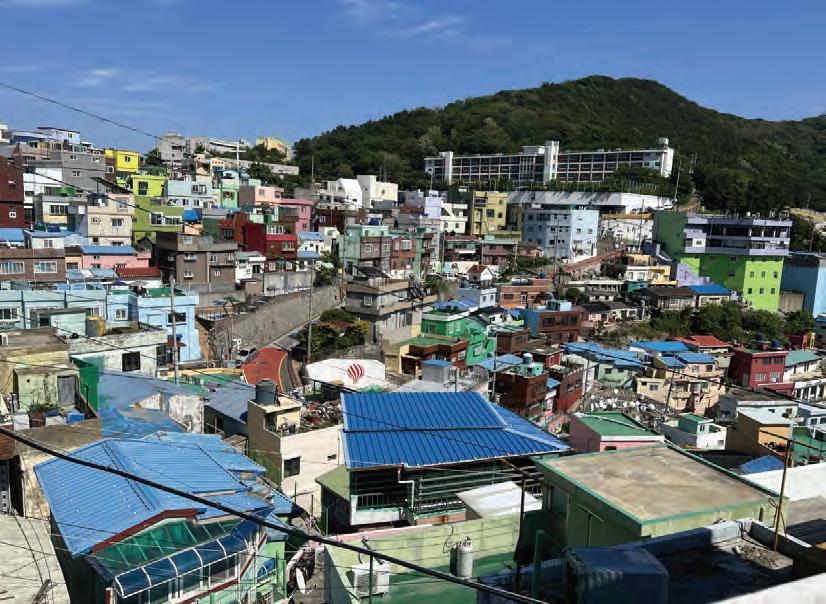
I looked at the clock in my London classroom on Goodge Street. There was precious time left in the city. I wasn’t finished. I recalled some advice from a professor. What did I have left to accomplish in London?
Go back to where I was the happiest in life, that voice told me. Go back to my roots. To the fundamental essence that never truly fades.
Chess.
The moment when time falls to the wayside and my brain is consumed with the sixteen pieces under my control. And the opponent battling back.
I missed chess.
Antique shops sat tucked away on side streets in London with displays of illuminated chess boards and beautifully crafted pieces. Chess.
Checkered sidewalks outside hotels where my strides took on the pattern of a Knight. Two squares forward, one to the side. Crossing quiet streets at night in a diagonal like a Bishop with a bus shining its lights on me in the distance.
Memories of good, long sessions of training where a chessboard greeted me for breakfast, lunch, and dinner.
The training days I looked forward to the most were fastpaced. Not headache-inducing. Speed chess. My favorite. Blitz mode. Where I played the entire game in under five minutes.
My search history was filled with local London tournaments and costs of entry. I found an event on Duchess Mews. I had ventured around London for months and never once come
across that spot. That street was calling my name. The London experience would’ve felt empty without visiting that corner near Oxford Circus. Duchess Mews. I dug through my drawers and pockets to scrounge up the entry fee. The small pile of change counted out to be the exact fee needed to register. Fifteen quid. I hadn’t thought of chess in the past three years. Here I was diving headfirst into a tournament.
I was terrified. As scared as the first time I changed schools in Mexico. Is it going to be like my past chess performances? Who am I going to play? I wanted to do it. I wanted to relive that rush. I mean, I left Canton, New York for a reason.
There was no pressure. It felt nice. I was just playing for fun. These eleven games were not going to decide whether I was going to travel to the world championship in Greece or to the Pan-American in Peru. It was just me and the board. The same atmosphere as when I started playing chess.
I got off at Goodge Street, my familiar exit for classes. But I had to walk thirteen minutes. I am not a big walker. I walked and walked until I saw the small rectangular plaque that read "Duchess Mews." Surrounded by old streetlamps in what looked like an alley, there it was. A sign read "London Chess Classic" and "Welcome." Classic and classy. A very appropriate title for a Sunday night of chess.
I made it to the venue and went down the stairs. My heart was racing. Am I really doing this? It had been years since I played but everything seemed the same. The waiting area where parents prepared snacks for the anxious kids. The screening room where one could chat about important games around the world. The World Chess Championship was being analyzed by a sarcastic commentator. And, like always, the registration area. Full of players trying to join last minute and the arbiters trying to calm down the
hounds and the loud noises. It was like I was in the middle of Times Square for New Year’s Eve. Who would’ve thought chess players could be so damn loud?
I was back in my habitat. The arbiter said, "Sorry lads we’re all booked." Was I too late? People were leaving disappointed. I was ready to head back sad, frustrated, and shattered that I wasn’t able to play a few rounds of blitz.
My hands were stuffed back into my coat as I calculated how to get back to my residence in Kentish Town and turned towards the door. A voice called my name.
“Wait! We might have a spot for you. Someone withdrew last minute.”

My heart soared. I get to play? If this wasn’t a sign, what is?
I joined the tournament a round late. My first round was against a girl. I didn’t know her name, but I saw some letters indicating a title. "WIM." Woman International Master. Is this how fate is going to welcome me back at chess? Playing against an international chess master? Well, great. I wasn’t going to complain. I was the underdog playing an international chess master. In blitz, you could get lucky. Could be sneaky. Snag a win. Just like the good old times.
I made my first move. 1. e4. I felt the anxiety in my fingers. My blood pressure spiked. All the distractions from the day faded. My mind went blank. One pin in my brain stayed focused.
Chess.
What’s the move? Should I move the rook? No…maybe Bishop g5? I was not used to playing chess. I mean, I haven’t played a tournament in years.
I had five minutes to win. I realized too late. My clock read thirteen seconds. My opponent had one minute and counting. I knew that was it. First round. First game back and the king of speed chess was going to lose on time.
I immediately resigned. There was not much to do with thirteen seconds on the clock. I embraced the loss and moved on to the next round. The second round was a success. I used my time wisely. 24. Rook f8. Check mate. I won the game. It felt like the first time I won my chess tournament in Merida, Yucatán.
The tournament was on. I won the third and fourth round without too many problems. I moved up to table number eight. Seven tables behind the leader and English Grand Master Keith Arkell.
This round I was playing a twelve-year-old kid. I checked his rating. I thought to myself. A twelve-year-old kid with a rating of 1450 on the eighth table. Life could not be better. I was already thinking how I would play in the top three tables if I win this round. 1. e4 – e6. 2. d4 – d5. The French Defense. Nothing to worry about within the first few moves.
Well, to my surprise, the twelve-year-old kid with the 1450 rating played as solid as Anatoly Karpov without a single mistake to be spotted. I had to spend precious time breaking his walls and defenses. By the time I had some sort of chance to win. Knight takes Bishop in e5. The center is under my control. But it was too late. I flagged and lost on time again. I kept telling myself. You have to play faster. You really do. This is speed chess, not your eight-hour World Championship game.
The next game I played as fast as I could. My opponent was even younger. A ten-year-old kid. We started the clock and
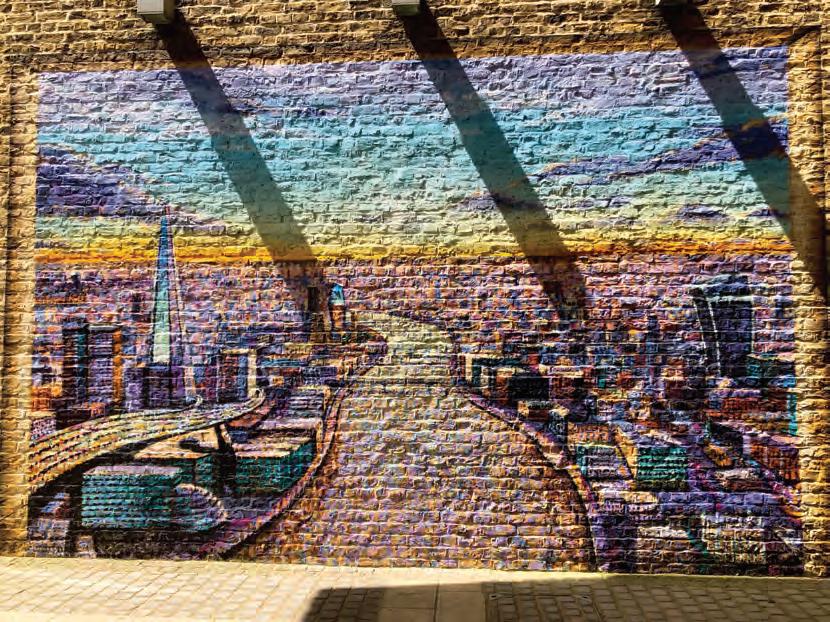
I started playing so fast my pieces would stumble away from the board. The kid followed my pace. We played like we only had ten seconds rather than five minutes. Well, it was all fun until I got to a critical position and decided to go with my gut feeling. Unfortunately, my gut feeling was a bit rusty. 33. Knight a7. An aggressive move which ended up trapping my knight and with it all my hopes of playing in the top boards. The tables had turned.
I could not believe it. Me, a junior chess protégé in Mexico, and now as a young adult, losing to another ten-year-old kid. Back in the day, most adults were scared of playing against me because nobody wanted to lose against a tenyear-old kid. I never really understood why. I mean, chess is a game that anyone can play. Now I get it. I shook the kid’s hand and left the room. I fell into my own trap. I underestimated a younger opponent and the kid had the brains to not only beat me but do it with style.
I won the next three games, lost the penultimate game on time, and won the last game of the tournament. I ended up playing ten games and won six of them. Great stats for a returning chess player.
I kept thinking as I left for the train. Playing this tournament was exactly what my time abroad needed.
This was it. My ticket home was in a week at six in the morning. That upcoming Sunday. I had seen a flyer at the venue for another tournament. Saturday night. I was in London. And I knew how I wanted to leave it. One more tournament. One more three-hour blitz.
I ran back to the venue and asked the arbiter: "Do you have any extra spots for next week’s Blitz?"
-Timur Martinez Smirnov

We started our day before sunrise. Forcing my body to wake up at 5am after a long day of travel the day before is certainly not my ideal way to start the morning. There are precious few things that can get me up while the sky is still pitch black and the air is still cold, but hiking to Base torres del paine, one of the most famous hiking spots in the world with its soaring stone towers? Yeah, that got me out of bed.
The bus ride into Parque Nacional Torres del Paine passed as we were crunched in our seats, dozing where we could and not totally sure what the mountains of Patagonia had in store for us. When the bus dropped us off at the registry, the sun was just making its way past the mountains enclosing the park, lining the clouds in gold. It was still cold, but the light and extra sleep brought a bit of excitement and energy to our group. There were eight of us, from all over the US - an unlikely group that never would have met if any number of things had gone differently. We grinned at each other and set off, excited for the day and excited to be with each other.
Used to the sometimes well-marked, sometimes not marked trails of the Adirondack Mountains, I’d initially been concerned that we’d have to be careful that we stayed on the trail and didn’t get lost in the mountain wilderness. Luckily, the trail was clear and easy to follow. A gravel path that slipped into a boardwalk over boggy earth led us through a hardy forest. The trees were small and sparse due to the mountain environment they lived in, exhibiting a riot of soft yellows and rusty oranges that were interspersed with earthy green. The trees had grown to lightly cover the path from above, easing the sound of the wind and making it feel like we were stepping through a wonderfully enticing tunnel. Emerging from the trees, we could see the trail winding and climbing until it disappeared around the side of the

mountain in front of us. Rising from mountain shrubbery, the grey and purple rock reached into the sky. White snow nestled onto the cracks and top of the mountain before disappearing into a cloud.
As we hiked along the trail, we kept an eye on the sky. A few of us in the group, including me, had experience hiking and knew how important it was to be cognizant of the weather. A nice vantage point partway up the mountain made a good place to pause for drinks and a snack and offered a clear lookout to a low-hanging cloud behind two mountains

in the distance. Although we worried, the weather would end up being fine on the hike. Mountain weather follows its own rules and those more distant mountains kept the worst of the clouds and rain away from us for the day, a stroke of good luck.
The spot where we chose to stop had a nice large rock and a bubble in the trail so other hikers could pass without us being in the way. The plants around us had steadily been getting smaller and the tree line wasn’t too far above us. Behind us, we could see the valley we’d initially passed through with gentle hills and a strikingly blue lake. As we got ready to continue on our way, we took guesses about what would be around the bend in the trail. What we could see included just a bit more elevation gain, not enough to get above tree line, before it curved around the side of the mountain. Someone said more clouds and someone else hit back with more UP, groaning good naturedly. We all laughed and started out.
What some don’t realize about hiking is that there’s far more looking down to make sure you don’t trip than there is looking around at the views. So it’s understandable that
I wasn’t walking with my eyes up as I rounded the bend in the trail. The person ahead of me gasped and stepped to the side of the trail. I could vaguely see her pull out her phone for pictures. I quickly stepped to the side to join her and looked up at the view. I was completely unprepared for its beauty.
Mountains alive with the colors of fall met far below us in a sharp V, a silver rush of water making its way through. The flat grey above us made the colors stand out even more. A light mist blew into our faces as we stood there. The trail lay like a ribbon along the side of the mountains, ready to lead us further into the wilderness towards our ultimate goal of the day. Even the end goal of the Base torres del paine wouldn’t compare to this moment for me. I was filled with joy and wonder.
There are moments in life that take your breath away. They’re rare, but you probably think to yourself, I’ll remember this forever. This was one of those moments.
-Karina Connolly


n. 1. the circumstances, conditions, or physical setting in which one finds oneself
2. the atmosphere or environment of a location
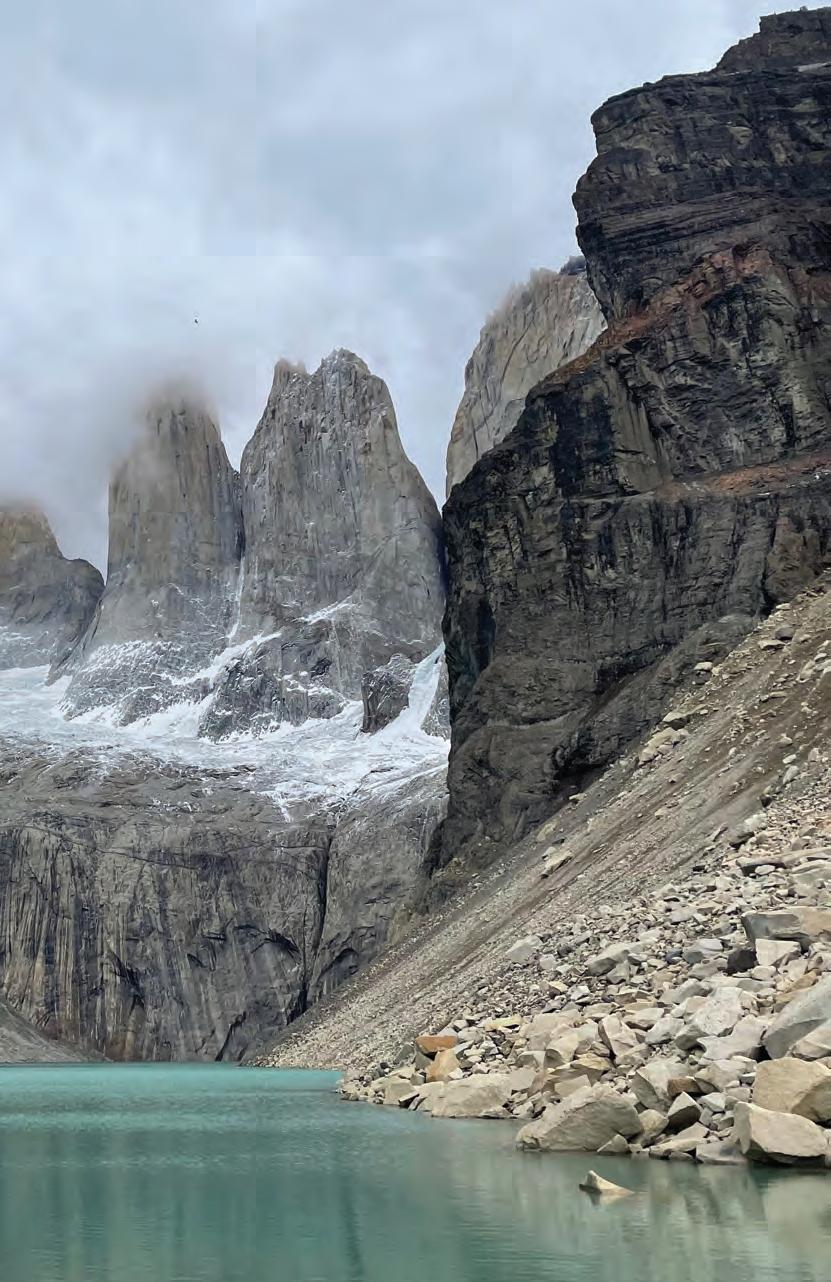
When talking about my time in Europe I almost inevitably end up talking about my time in Suhl. Suhl is a small city in Thuringia, one of the former East German states, and is not a place many people have heard of - including Germans. It is not a site of any remarkable historical significance or natural beauty. Suhl was, however, the furthest I was from home while studying abroad. Not in a geographic sense, but in the sense of remoteness that permeated the time I spent there. I first learned of Suhl’s existence looking out of the window on a regional train from Erfurt to Würzburg in the midst of a Deutsche Bahn debacle that would be all too familiar to anyone who has traveled Germany by rail. I was immediately captivated by the mixture of colorful modernist buildings looming over the half-timbered homes and baroque churches nestled in a valley on the southern end of the Thuringian Forest. It was as though my train had passed through Berlin’s Karl-Marx-Straße in rural Thuringia. I knew from the two minutes I spent trying to get a good picture of this town from a moving train that I would have to come back. A month later, I spent the coldest weekend of the summer acclimating to the patchwork city of Suhl.
As a student of the German language, probably the most frustrating thing about my time in Germany was how excited the Germans I spoke with were to practice their English on a native speaker, as if the same logic did not apply to my German. Part of the mystique and remoteness of Suhl in my mind comes from the fact that this is the only city I have

ever visited where no one spoke a word of English to me for the three days I spent in the town. Instead, I was interacting with a North-Franconian dialect of German which turned the familiar “ja” into a “jo” and my comparatively strange German prompted multiple store owners and conversation partners to ask me which part of France I was from.
I managed to convince Emma, a friend who was living in Berlin, to meet me halfway and go to Suhl. I mention this because on the train from Würzburg I met a man who asked
me if he was on the right train and we learned that both of us were University of Tübingen students headed to Suhl for the weekend to meet friends who live in Berlin. This coincidence only added to the uncanny feeling that Suhl has as a city of striking architectural styles; and despite meeting again on the train back to Tübingen and proving the idiom, man sieht sich immer zweimal im Leben (you always meet people twice in life), we never exchanged names. It is through interactions and anecdotes like this that I remember my time abroad, and Suhl as a patchwork city was full of them.
Despite having lived in Germany for six months by the time of my visit, there were things in Suhl that confounded me. The main road in the old-town part of Suhl was, at least for the summer, carpeted. Despite the rain and dirt that constant foot traffic provides, the main thoroughfare from the Baroque Kreuzkirche to the shopping center was adorned with a wide, red carpet. When asking the locals, many of whom had face tattoos, why there was a carpet on the main walking path, most responded that they didn’t have the slightest clue.
On our only full day in Suhl, Emma and I went hiking on the mountain to the north of the city. As we enjoyed the Thuringian Forest, the bass of a rock set from a band playing an outdoor festival radiated up the mountain. Looking out over the city and the surrounding villages - indicated on road signs by the number of buildings rather than inhabitants - provided a perspective that erases the largest modernist buildings from the cityscape. These developments are built along the mountain and from the top they are obscured, leaving only a Suhl that is unrecognizable from the one on the ground.
At the Gasthaus zum Bären, the menu is a chalkboard outside of the restaurant, and it changes daily. Not realizing this, Emma and I sat down, ordered drinks, and then had to
leave the restaurant in order to figure out what we wanted. The only meal options that day were dumplings and rabbit or beef and sauerkraut, all of which was delicious.
Suhl feels remote because it is not a place people visit. The architectural styles and atmosphere don’t resemble the other places I visited in Germany; the streets are named after local celebrities, the city hall is a giant socialist cube, and the retro-futurist shopping mall has a motorcycle museum in it. It is a place where I was a conspicuous American, but also I was able to prove that I could survive entirely on the German I had learned. I could not have imagined a city like Suhl existing, seemingly on top of itself, before I had seen it - and ever since I haven’t been able to forget it.
-Ian Albreski

It’s 8am and bikers zip past me down Adalberstrasse street on my walk to the Kottbusser Tor underground. For the first few weeks in Kreuzberg it was a constant effort to dodge bikers or people on scooters. I quickly learned that, unlike in the US, pedestrians do not have the right of way in Berlin - bikers conquer the streets. If you are looking to travel to Berlin, one of the most helpful tips I can offer is to be wary of the bike lane and never stand in it.
Any well-designed city relies on quick and efficient transportation, but the culture of Berlin’s everyday movement is speedy with a sense of ease. While there are bikers in almost every city around the globe, I have never witnessed such a biker-friendly environment before Berlin. Not only do most people rely on biking as their first method of transportation, but they’re also unbelievably skilled. Walking home from the grocery store, I witnessed a woman biking with three bags of groceries strapped around her body and basket - keep in mind biking through the busy streets looks challenging enough!
Berlin’s transportation system is called the BVG (Berliner Verkehrsbetriebe). The BVG offers three main modes of transportation - the U Bahn (my personal favorite), bus, and S-train. All are quite accessible, but oftentimes the U Bahn is the fastest to get me from my apartment to the studio or other parts of the city.
The most common way to access transportation is by purchasing a monthly BVG ticket, which allows you to take any mode of transportation offered by the system. If you purchase a long-term pass, the BVG works through an honor system - there is no card or ticket to punch each time you get on the bus or U Bahn. To monitor this, BVG workers will disguise themselves on the bus or train and come around
every so often checking tickets. If they catch you without a ticket you are taken off the transportation and fined - depending on the situation you may even be brought into police custody, or so I’ve heard. My first month of using the BVG I never once encountered a worker, but a few days ago I was stopped by two in one day, so it is always safer to follow the honor system and purchase your daily or monthly ticket.
Knowing how efficient transportation in the city is, I would never see myself purchasing a car if I chose to live here long-term. I would purchase my BVG pass and use a bicycle. I’ve often seen Berliners riding the escalators and boarding the U Bahn with their bikes. It’s a sustainable accessory that you can’t leave the house without!
- Hannah Taylor

My favorite thing about Freiburg is that you can travel fifteen minutes by bike and end up in another world. To me, Freiburg is a bunch of little universes, each tucked away in a corner of the beautiful city. Today, our sustainability class was taking a field trip to one of the few Garden Cities in the world. So, after hearing a short preparatory spiel from our professors, the sixteen of us hopped on sixteen blue Swapfiets rental bikes, and we followed Professors Lucy and Hans-Jörg from Freiburg’s city center into the district of Haslach.
We entered the Garden City through a quiet street. It was narrow, and tiny, light brown row homes lined either side. All I could hear was the breeze and the occasional bird chirping. Each home had a small square plot as a front yard, and each plot was filled with flowers and trees. No cars were parked on the street.
We rode on until we found ourselves at an intersection. The houses changed from light brown to yellow, and these yellow homes were strung along the street, connected to each other like row homes, as far as the eye could see. The front yards were bigger in this part of the neighborhood, and most people had filled them with fruit bushes and trees, flowering shrubs, pollinator plants, decorative fences, and swing sets. Rays of early September sunlight shined through overgrown and neatly-kept gardens alike.
The neighborhood was unlike anything I had ever seen. I decided to do some further research on Garden Cities to learn more about them – why they were first designed, and why they exist in so few places. As I researched, I decided Garden Cities would make a fun post for the alternative living blog I had been writing during my time abroad. Garden Cities were something I had never heard of existing in the
US, and they seemed like the ultimate form of living and interacting with nature differently.
The post began with some historical background:
The crowded streets of 19th-century England caused enough distress to warrant a new vision of living: one with less illness, less pollution, and more green space. London’s population was quickly approaching 2 million, and the city’s infrastructure simply was not keeping up with the demands of the people. A growing middle class started to emerge, and the gap between classes, though still very apparent, started to close. Longer commutes into the more aesthetically pleasing countryside started to extend to lower classes. And with this, a shift to countryside living became more common. The problem was, however, that people still craved social interaction, closeness to their neighbors, and easy access to shops, food, public services, and the other amenities of the city. The longing for these urban assets is what many city planners call “affinity urbanism.”
This was when Ebenezer Howard, a city planner from London, coined “The Garden City.” The idea was to put nature at the center of people’s lives while maintaining their connection with society. He explained this philosophy by likening people's needs to two competing “magnets” pulling them in different directions. He imagined there was a town magnet, offering higher wages and social opportunity, as well as a country magnet, offering an abundance of food and water and a connection to nature. But he also imagined a third magnet, the town-country magnet, which reconciled people’s needs for both social interaction and connection to nature, and so the pioneering designer made a blueprint of a new kind of city based on this model.
Howard had very explicit criteria for his Garden Cities. The cities had to be circular, accessible by train, surrounded by a green belt to limit sprawl, with an industrial area on the outskirts for access to goods and services, and had to house 30-50 residents per acre. In addition, Howard imagined that roads would connect
these cities to each other to promote even more accessibility and social opportunity. Unfortunately, enough of his plans were never actualized for this to happen.
In fact, though many countries have Garden Cities, they are few and far between. That is why I was so excited to see one in person in Freiburg. The more I thought about Haslach’s Garden City, the more the word utopia popped up in my mind. Every house had access to a garden, and the streets were quiet and safe, allowing pedestrians, cyclists, kids, and pets to be in the street without having to worry about cars. The land was distributed equitably: if one person’s front yard was small, they were given ample space in their backyard. All the gardens received an abundance of sunlight. And lastly, while the homes were built the same, each was decorated differently and had different things growing in the garden, giving them each a sense of character and individuality.
To me, the difference between a Garden City and a suburb seemed abundantly clear, but since they look so similar on paper, many city planners and environmentalists today dismiss Howard’s idea as just another blueprint for suburbia. Still, I felt like the two couldn’t be more different. One promotes exclusion, longer commutes, and bigger, more energy-intensive houses, while the other promotes inclusion, shorter commutes, and smaller, less energy-intensive houses. Plus, in his design, Howard intentionally tried to prevent what he knew as “Monotonous Urbanization,” or what we would today call urban sprawl.
Having said that, I can see how there might be issues with Garden Cities. I wonder how inclusive these communities really are. Can everyone really afford to live here, or do you have to exist within a certain socioeconomic group? Additionally, although Haslach’s home gardens were originally used to grow edible crops, most of the gardens today are only used for decorative plants.
Nevertheless, even decorative plants are usually amazing pollinators, help promote biodiversity, and allow people to have some sort of connection with the outdoors at home. And having
more condensed housing allows for greater social opportunity and easier access to goods and services – both within the neighborhood and in the city center.
As time goes on, Garden Cities and their benefits become increasingly relevant, with good city planning being a necessity to help combat negative human impacts on the environment.
Having the opportunity to see that good city planning is not only
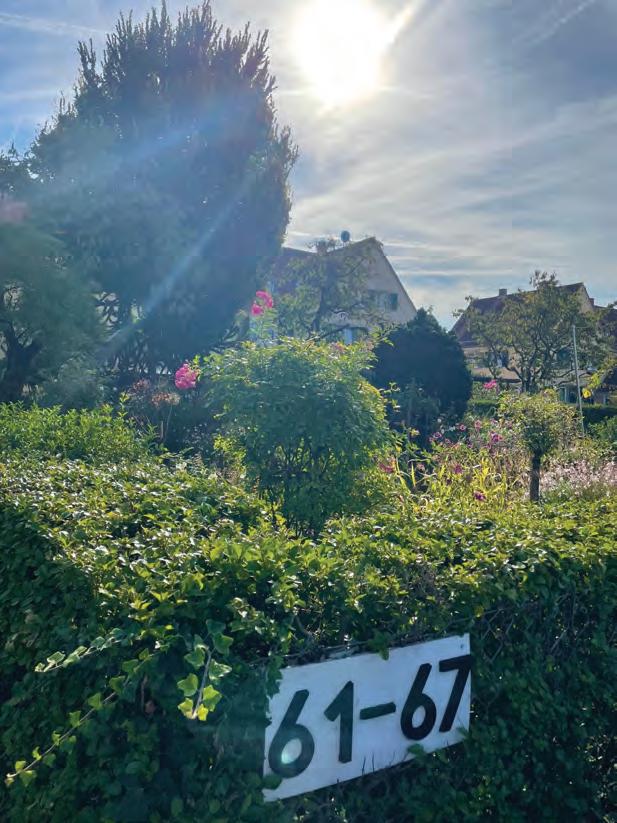
possible, but a desirable asset for many people in Freiburg, makes me hopeful that some of Howard’s ideas can be implemented around the world and help our global cultures shift from being primarily concerned with the aesthetic of private space to being more concerned about the environment, its people, and building communities…
I stopped writing. There were too many ideas to type.
The semester had only just started and I already felt as if Freiburg had invited me into one of its most beautiful and socially complex spaces. Little did I know that Freiburg would continue to reveal itself to me in surprising ways. In this city, it is easy to just ride your bike for a while and stumble upon something completely unexpected. As I sat staring at my computer, I couldn’t help but wonder what our next field trip would bring.
-Maeve Reilly
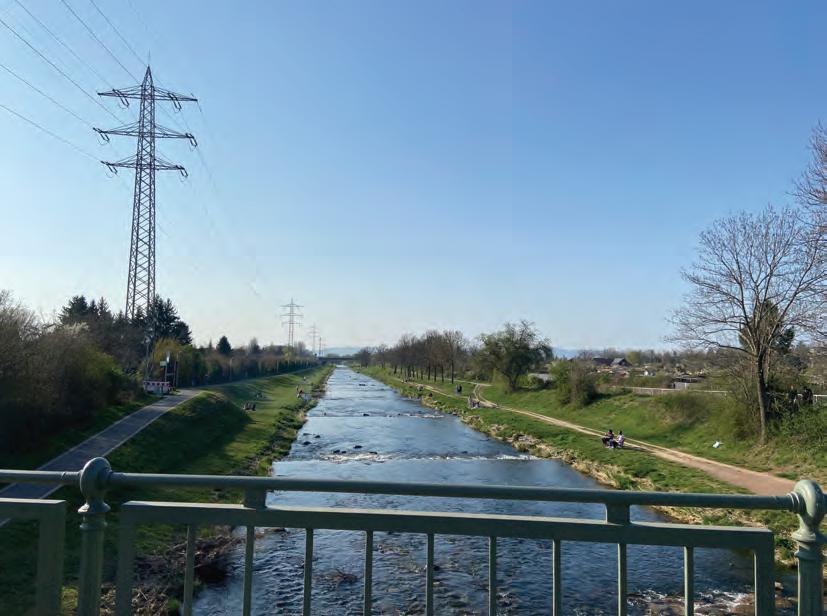
Eastern Grey Kangaroo, Brisbane, Australia [Andrew Painton]
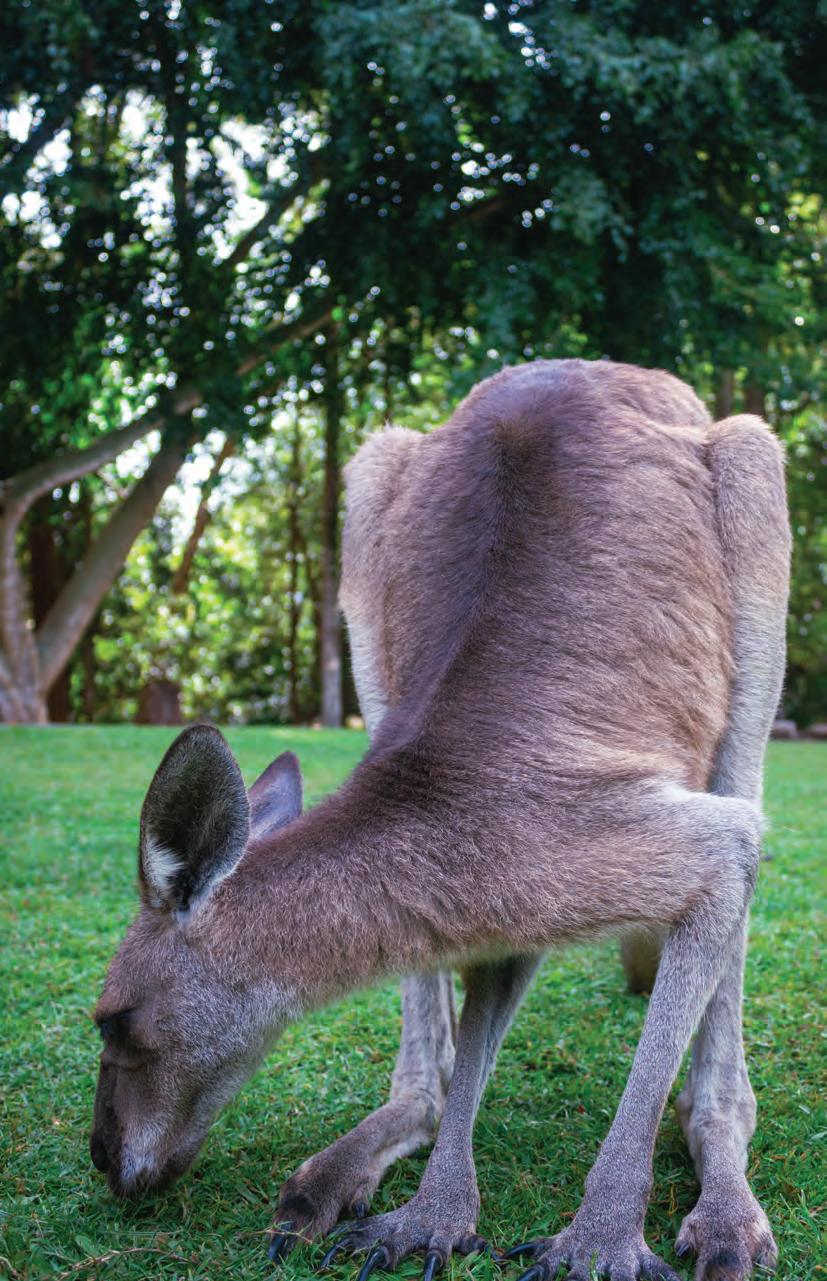
Originally built as an airport in the 1920s, Tempelhof Field was re-established as one of Berlin’s most utilized recreational spaces. When Tempelhof airport closed in 2008, Berliners participated in a city-wide vote to determine whether the 386-hectare space should be developed for industrial-like housing or public community space. Following the biggest voter turnout the city had seen in over a decade, Tempelhof airport was reimagined as a public park in 2009. With vast stretches of open runway, Tempelhof Field is an inviting space for bikers, skateboarders, rollerbladers, or anyone else looking to engage in any type of recreational activity. Situated between runways are fenced-off dog parks along with social spaces for picnics or barbecues. Walking through the park, I was astounded by its expansive nature – everywhere I looked there was something new in sight. As a public park, Tempelhof serves as a space for social interaction while also catering to those wanting to engage in private time for solace.
The Tempelhof garden is a great space for personal respite. As a community garden, anyone in Berlin is invited to enjoy its offerings but there are strict guidelines for planting and building beds. Everything in the garden is made from re-purposed materials, such as wood scraps, old chairs, or eclectic knick-knacks for decoration. If you wish to build a space for your own garden bed it must follow these guidelines and has to be grown from seed. While exploring, I saw crops of kale, tomatoes, carrots, onions, herbs, and much more. In addition to the plethora of vegetables, the space is filled with blooming flowers and cascading greenery. As you walk through the garden you will find hidden pockets situated with benches and seats if you wish to read a book or pause and observe the scenery.
Tempelhof Field is a wonderful example of Berlin reutilizing and reimagining existing space. The park’s expan-
sive nature and different features allow the visitor a choice to engage with others in a social setting or to go off on their own. Walking through the garden offers a secluded and picturesque experience, while bicyclists have a view of the city skyline in the distance. It’s a destination for people with different interests to gather and spend time together.
-Hannah Taylor

Tuesday, November 9, 9am. Walking in a residential area of Watamu, we follow Jonathan, passing shambas until we reach the edge of the mangrove forest. A habitat I’ve never experienced before, I love the abrupt start of the forest, such a different landscape compared to the rest of the coast. We enter a six-foot-wide channel, knee-deep in the saltwater. Mangroves are on either side of us as we trudge through the heavy liquid, walking to a small, sandy island within the forest called Kisiwani. Women and children are also in the water, walking with their own purpose. Jonathan starts to tell me how he wishes a boardwalk existed here for the young children to get to school with ease. When the tide is at its highest, kids can’t wade through the water without having to swim and this channel is the only way off Kisiwani. He tells me how the villagers have the necessary wood but need help with the cement and construction required to build the boardwalk. I want Local Ocean Conservation (LOC) to build the walkway, but with more thought and discussion it becomes apparent how complicated that could be, politics, funding, construction, maintenance... Jonathan leads us around the island, walking along the forest edge, looking for seeds, checking on saplings, and learning about the many benefits of this species. We chat a bit about Jonathan and learn that his father lived to the age of 115; his diet consisted heavily of fish and greens.
Mangroves are a salt-tolerant, terrestrial tree that grows in tropical and subtropical intertidal locations. These forests, found in sheltered areas such as estuaries and lagoons, are mainly comprised of mangroves but include numerous
other plants of importance. Of the 70 mangrove species worldwide, Watamu’s Mida Creek is home to eight species: Bruguiera gymnorrhiza, Rhizophora mucronata, Ceriops tagal, and Avicennia marina being the most common. Each species has a unique seed shape and color. The Ceriops seed is a long, slender pod that gradually bulges a bit in the middle, and the top of the seed shows a bright yellow band once it is ready to fall from the branch and germinate. Although mangroves thrive in a unique environment, there are environmental factors that affect their growth, such as climate, salinity, tidal patterns, and sedimentation rates.
Sunday, November 12, 6:50am. Nikki picks us up and we drive to the end of a dirt road nearby. She leads us down a narrow path alongside a cement wall, most likely one of four long property lines of a new foreign builder. Within a minute we reach the edge of the mangrove forest. She turns to smile at us, eyes shining, as we follow her down a passageway through the trees, wading into the waist-deep water. We emerge to a small circular clearing in the mangroves, and the sunlight shines softly on the glassy water.

We are now unable to touch the ground. Nikki’s smile widens as ours spread to follow. The spring tide pulls us toward a ten-foot-wide channel which begins our mangrove float, a beautiful and relaxing journey with the trees and the tide.
In A Guide to the Seashores of Eastern Africa and the Western Indian Ocean Islands (1997), M.D. Richmond notes that, in addition to being a source of beauty and enjoyment, mangroves provide many environmental services as well as human resources. Mangrove trees have been a source of timber and firewood since people first settled on the coast,

although it is now illegal to cut the trees. The wood is rotresistant due to the high density of the material, making it useful for a variety of purposes. Poles made from mangrove wood were a common building material in this area and were used for homes, fish traps, boat masts, and furniture. Some mangrove species even have tannins that can be used for treating leather. Mangrove forests create a barrier for storm surges and sea-level rise for the villagers that live along the forest. Additionally, mangrove trees filter the water and kill bacteria and illnesses that could otherwise impact the villagers. The trees also protect against shoreline erosion, trap sediments, and recycle nutrients. Wildlife benefits from the trees as they are home to baboons, bees (which then provide villagers with honey), crustaceans, mollusks, birdlife, and they are a nursery to young fish and prawns. Mangrove forests are an undeniably beneficial marine habitat.
Monday, November 22, 4pm. We join Jonathan in packing sand into plastic bags at LOC in preparation for the seeds that we hope to find when we visit a mangrove forest in Magangani tomorrow. We will plant the seeds in the mangrove nursery, in hopes of growth and the chance for LOC to plant them out in the forest in partnership with local community groups. As he packs sand, Jonathan asks us what we eat on Christmas, if we have any traditions. He tells us about his celebrations, eating fish with friends and family. He tells us we should call home and say we’re staying in Watamu for Christmas.
Mangrove restoration is a well-established branch of Local Ocean’s work. Beginning in 2018, the mangrove nursery here onsite has been home to over 230,000 mangrove seeds, found out in the forests and brought back to LOC to be planted and monitored until they grow into saplings. Once grown, the saplings are transplanted out into the forests to help with regrowth, an activity that involves local community members and students. Local groups visit LOC for
a presentation and conversation about mangrove species, their properties, the ecosystems, the benefits, and how to help with restoration. They learn how to properly plant the different mangrove seeds for the greatest chance of strong growth. The mangrove nursery is also an educational tool for LOC visitors and tours.
The reason for mangrove restoration is the overuse and illegal cutting of mangrove trees. The beneficial qualities of the trees put them in high demand as people want good quality building material and firewood. High rates of cutting lead to dense forests being unable to recover from the damage. Luckily, Local Ocean Conservation is working on restoration projects and engaging the local community to have the most impactful outcome on the forests. These partnerships give locals a sense of ownership and care for their neighboring ecosystem which instills a long-term appreciation and protection for the trees. This care for the mangrove forests can already be seen where villagers have started their own mangrove nurseries within the existing forest.
Inland from the well-known beaches of Watamu are the lesser-known mangrove forests. Of equal importance to human life, biodiversity, and overall climate health, mangrove trees are a crucial aspect of this area and locations worldwide. Greater recognition and care for mangroves is vital to local community well-being as well as countless fauna populations. Local Ocean Conservation has stepped into this role and beneficially contributes to their local mangrove forests, but community contribution, a general appreciation, and understanding are necessary for high restoration success. A protector from sea-level rise, home to many faunae, a source of timber, a place to enjoy. A tree rooted with character and benefits. Mangroves.
-Hope Olson
Lamington National Park, Australia [Taline Almasian]

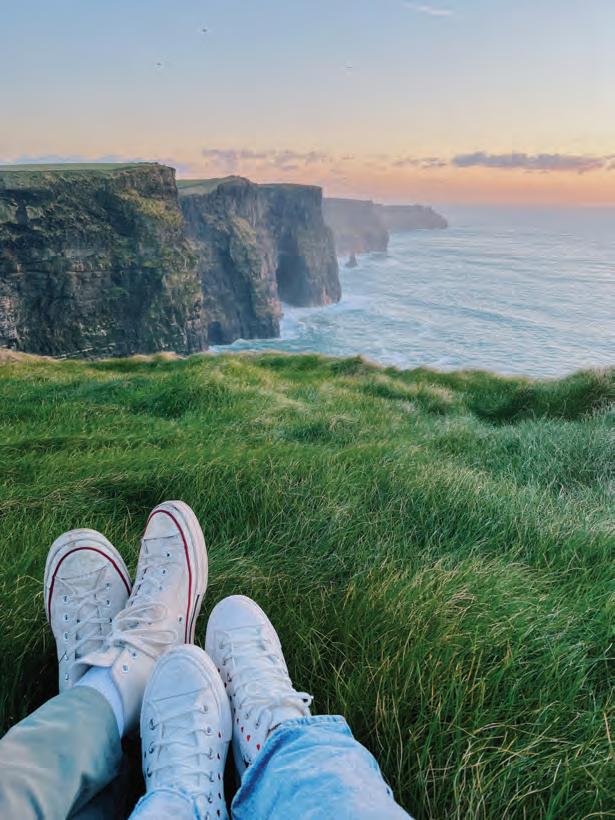
Sunset at the Cliffs of Moher, Ireland [Madison Medwid]